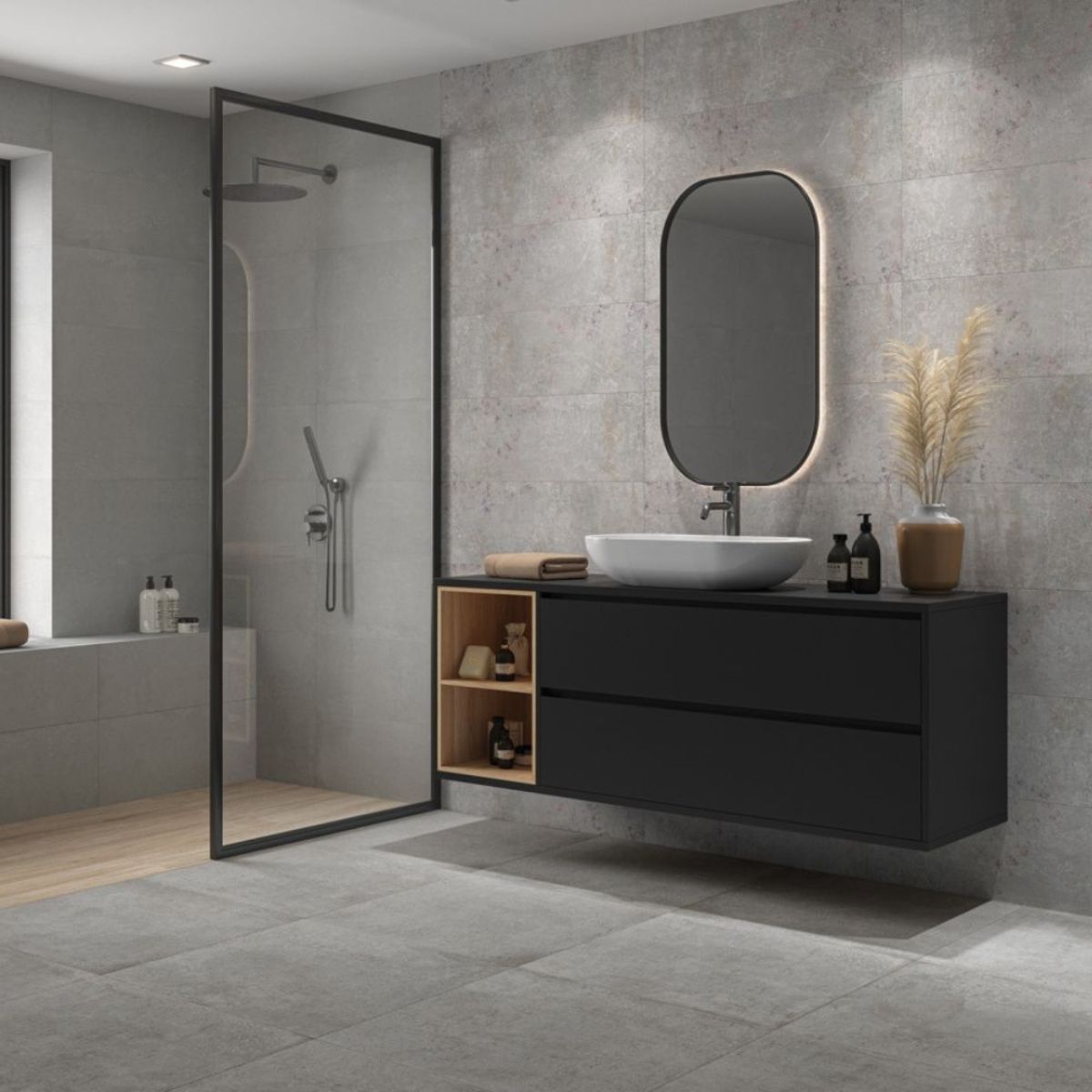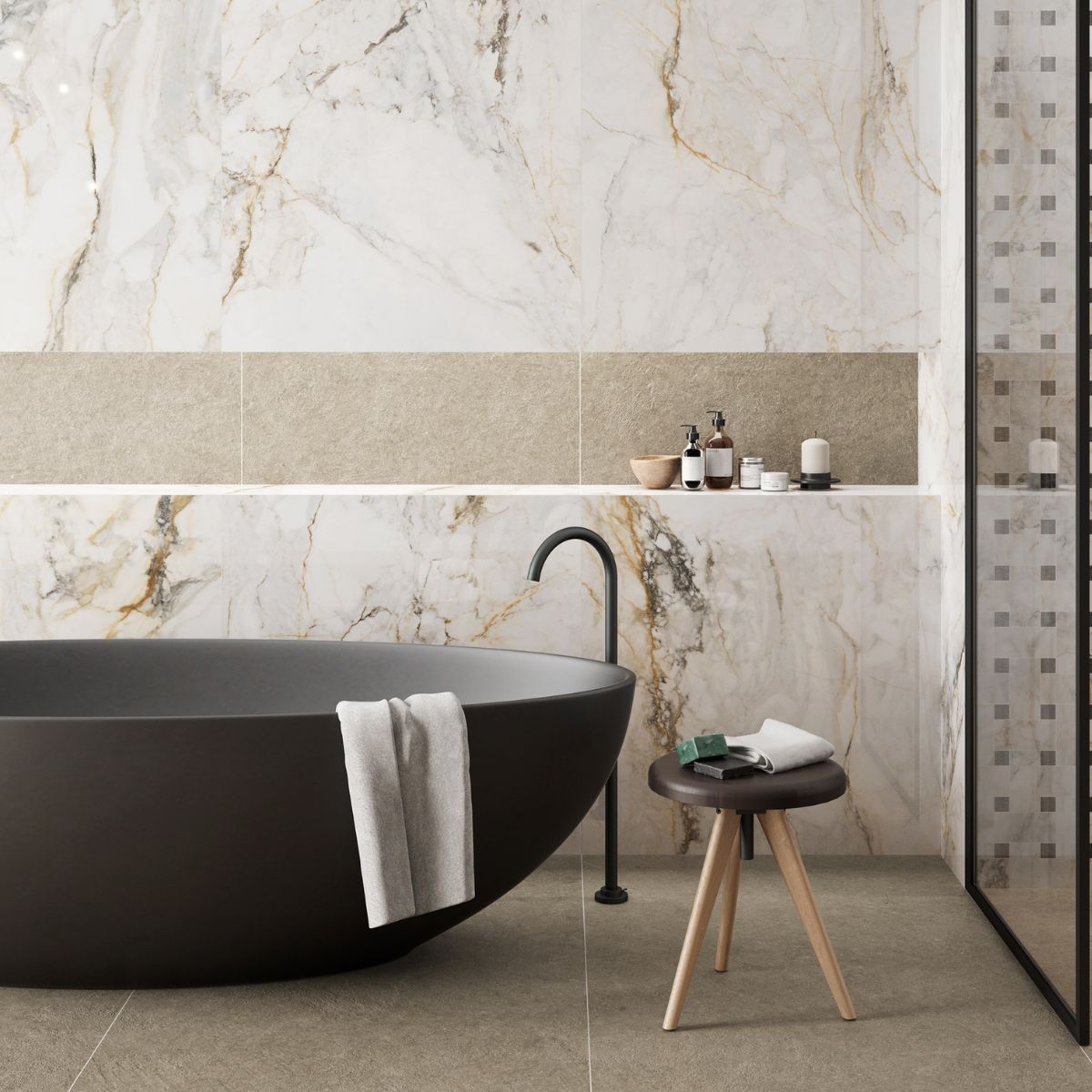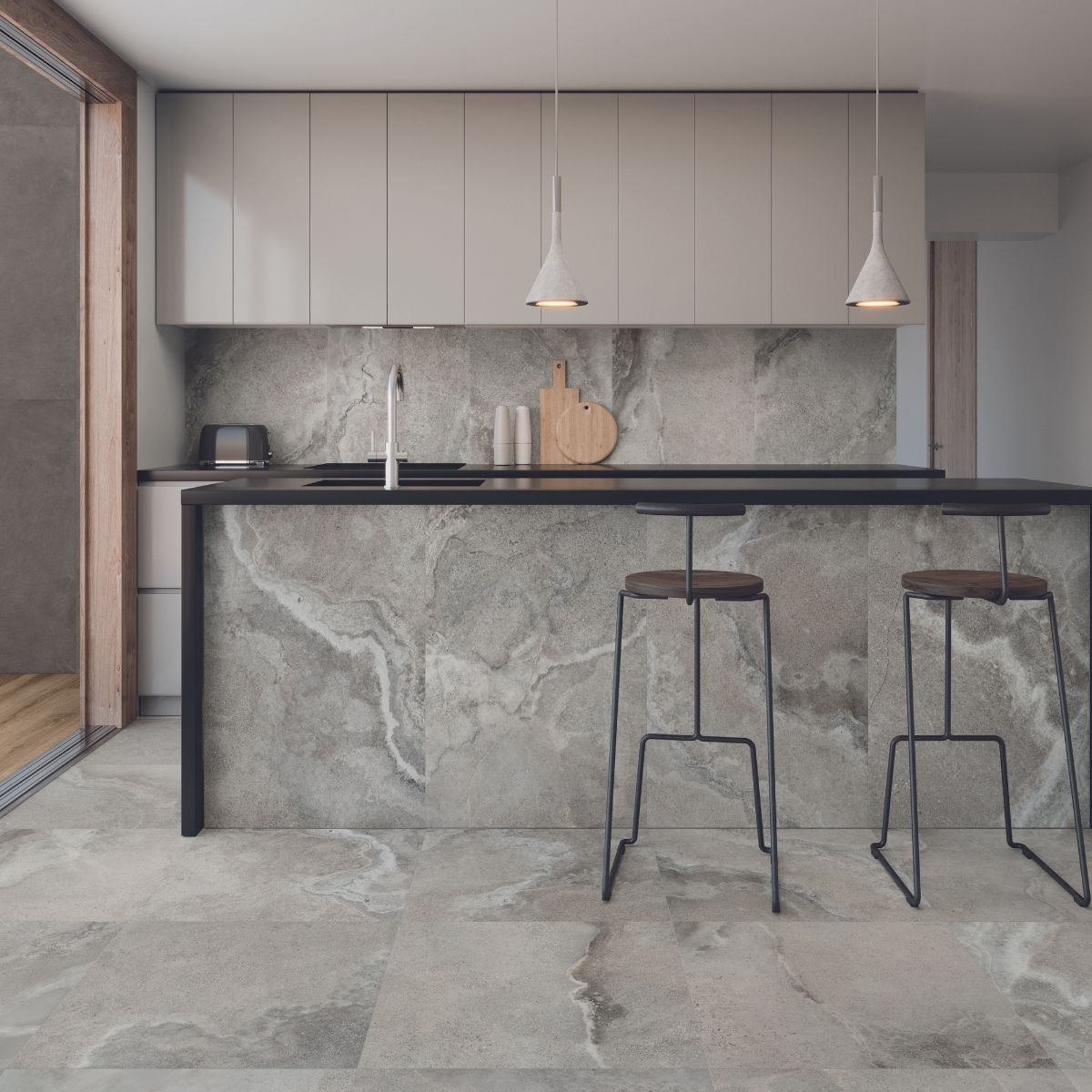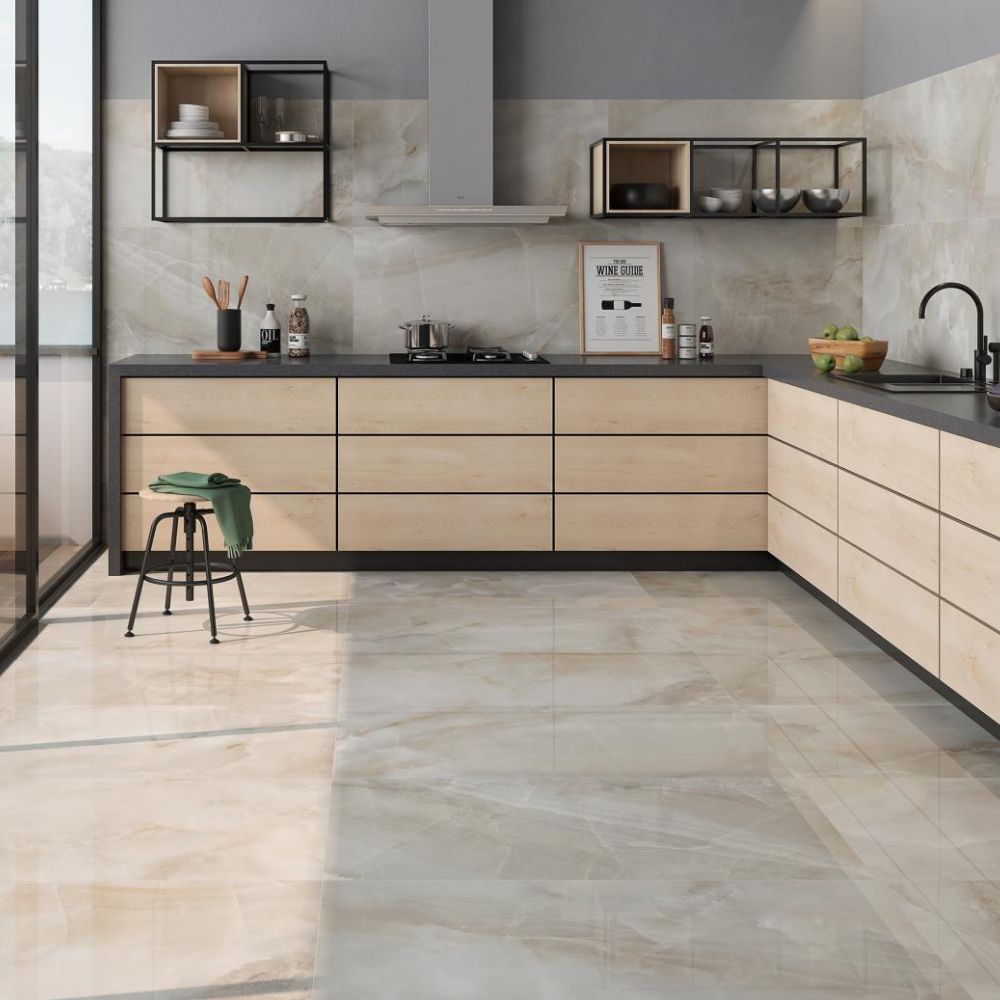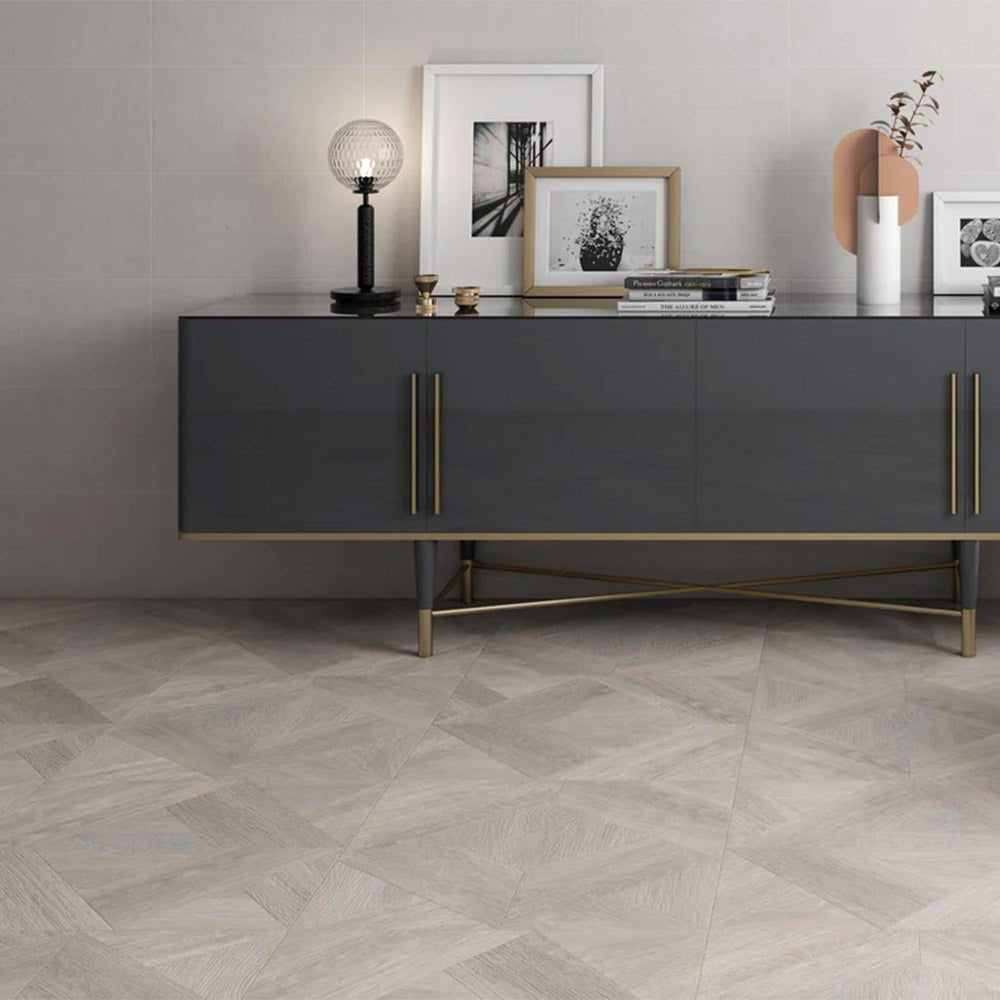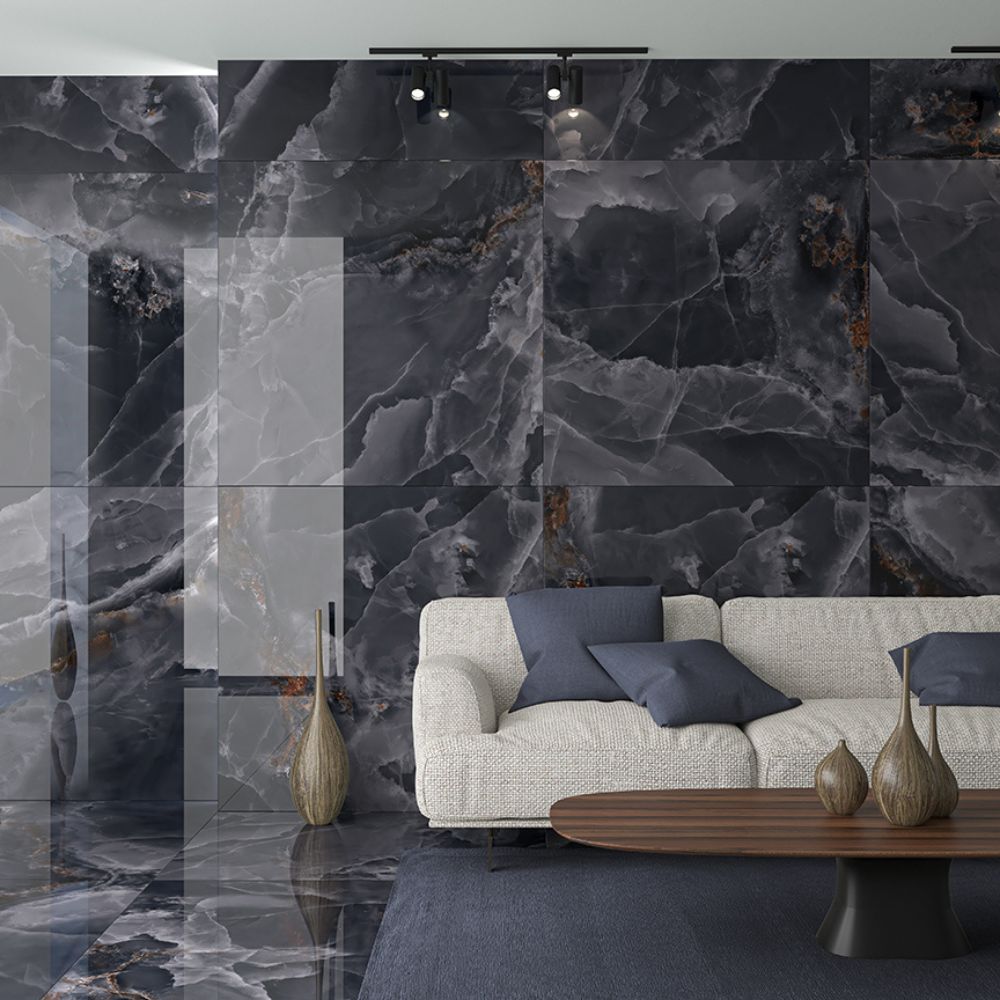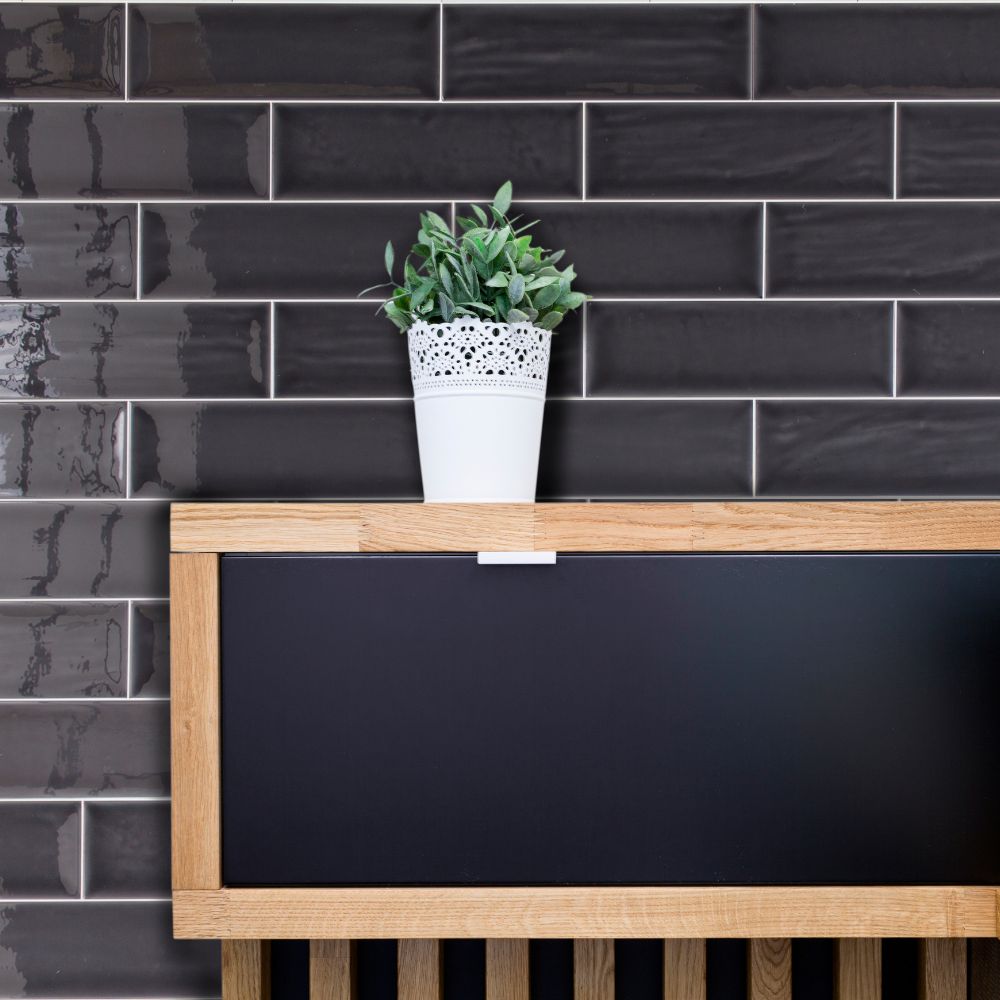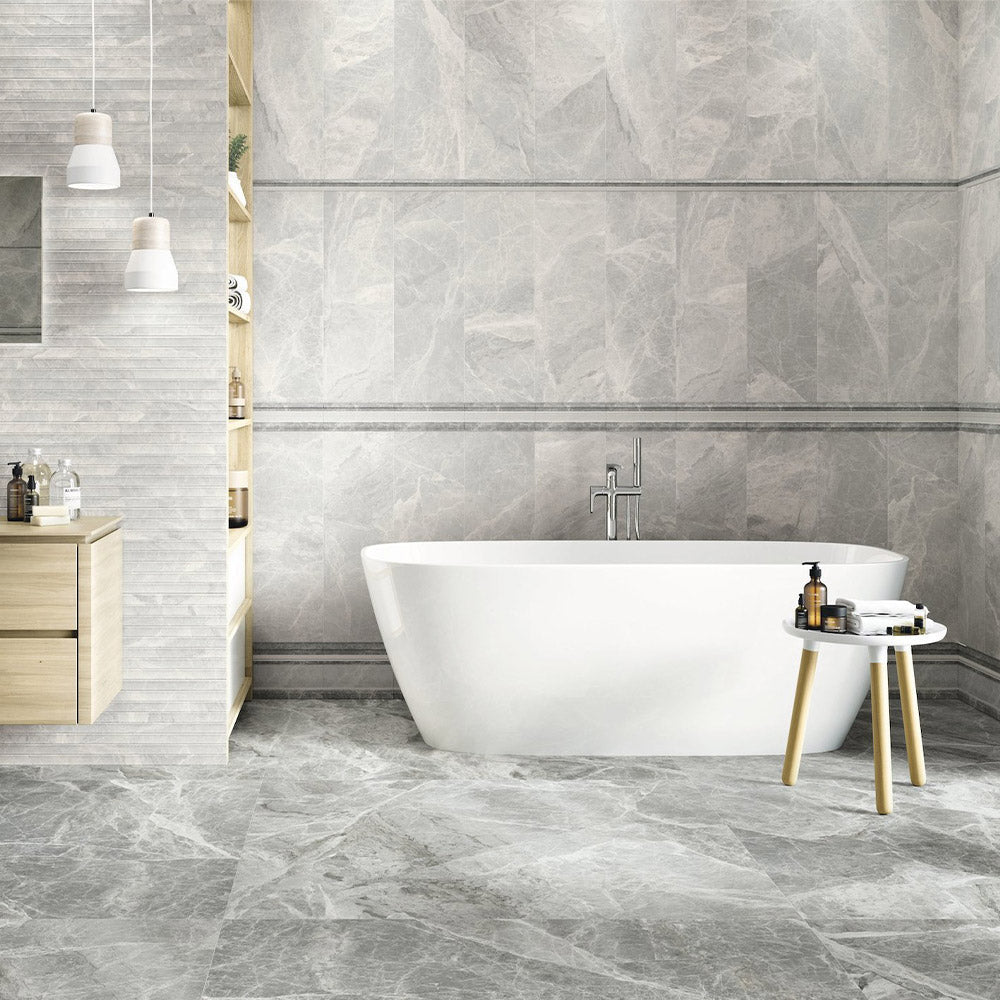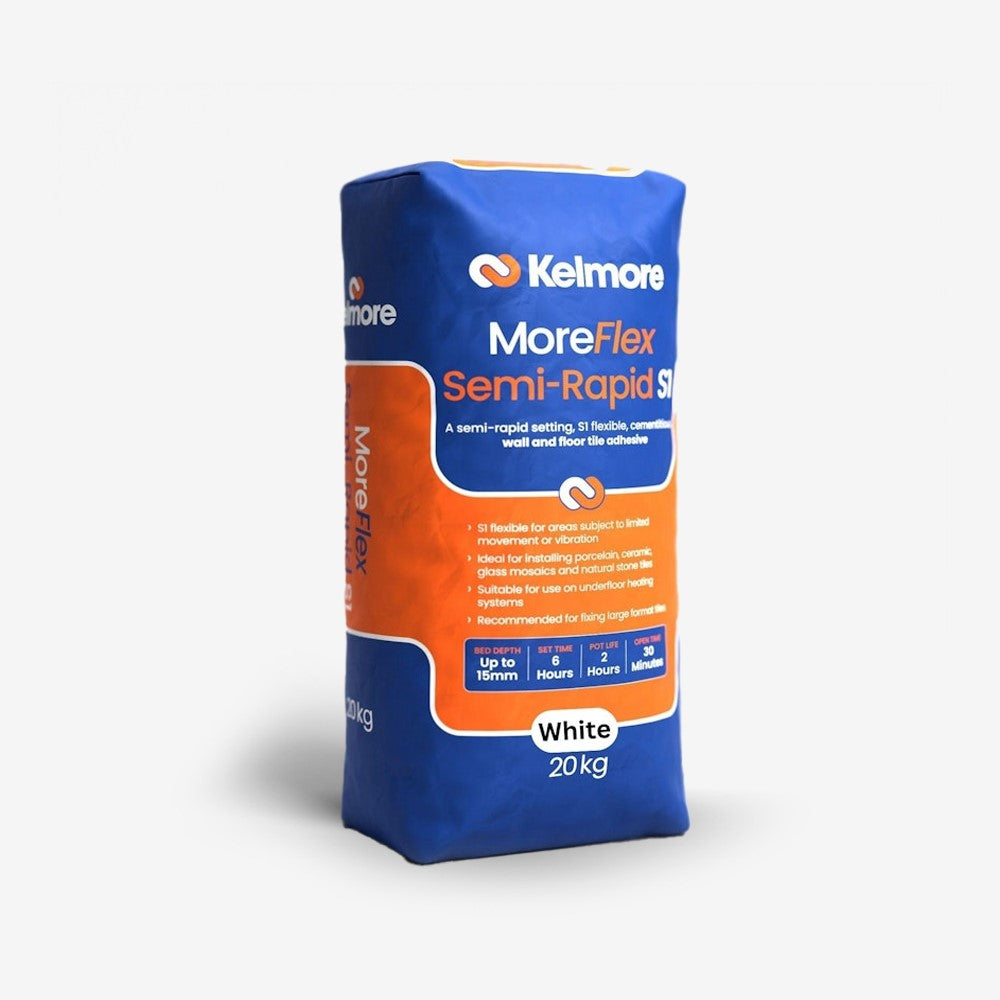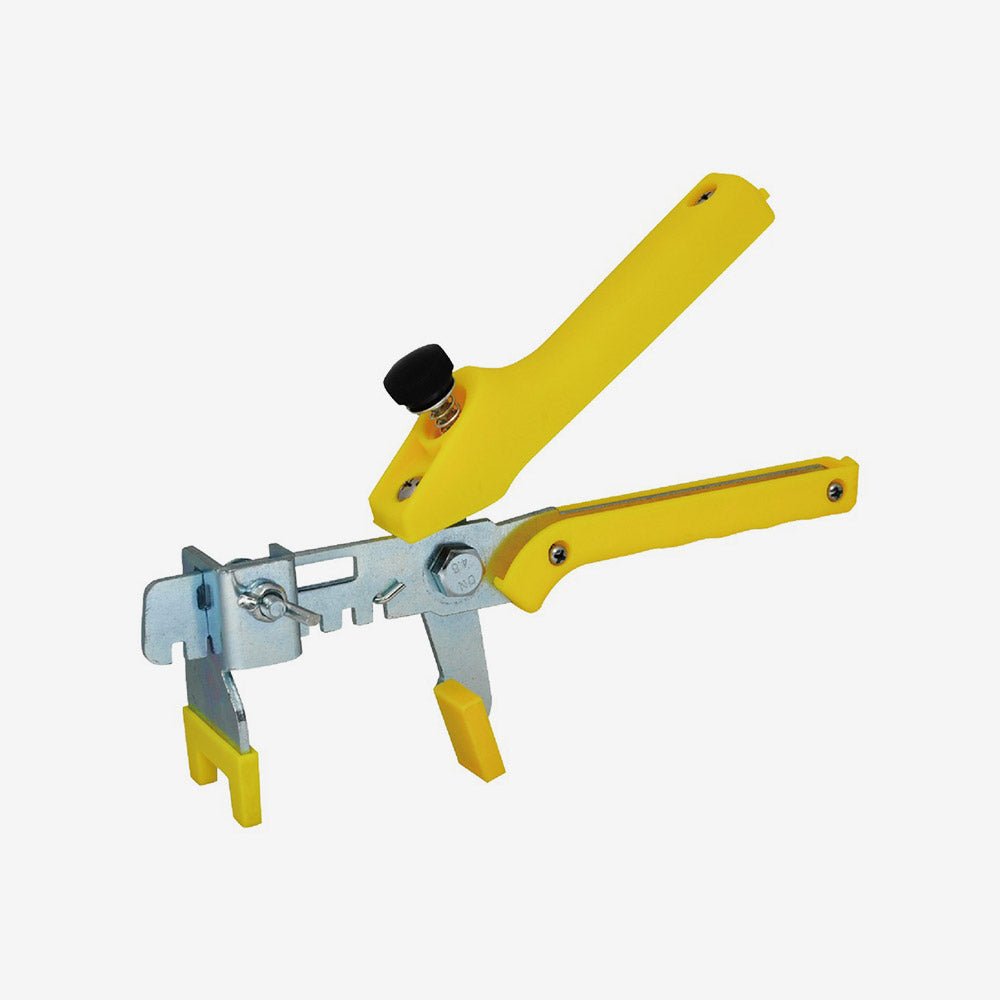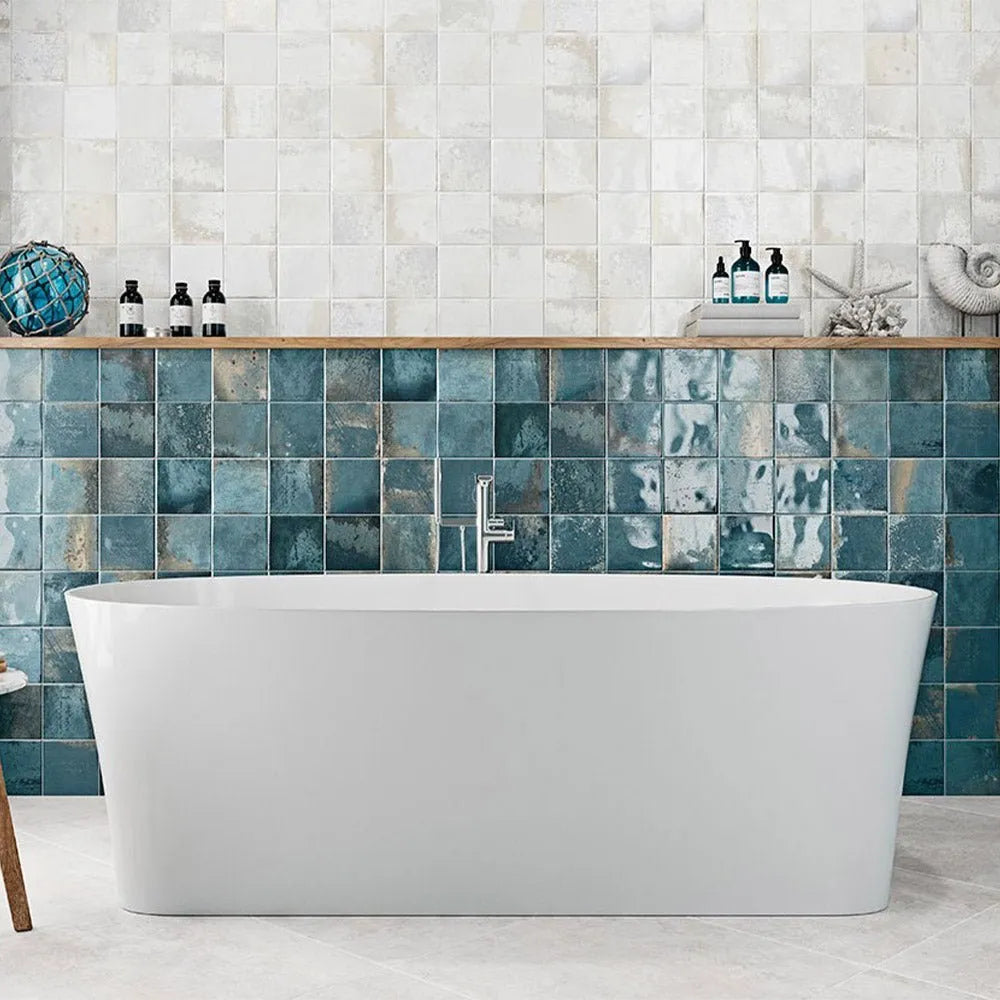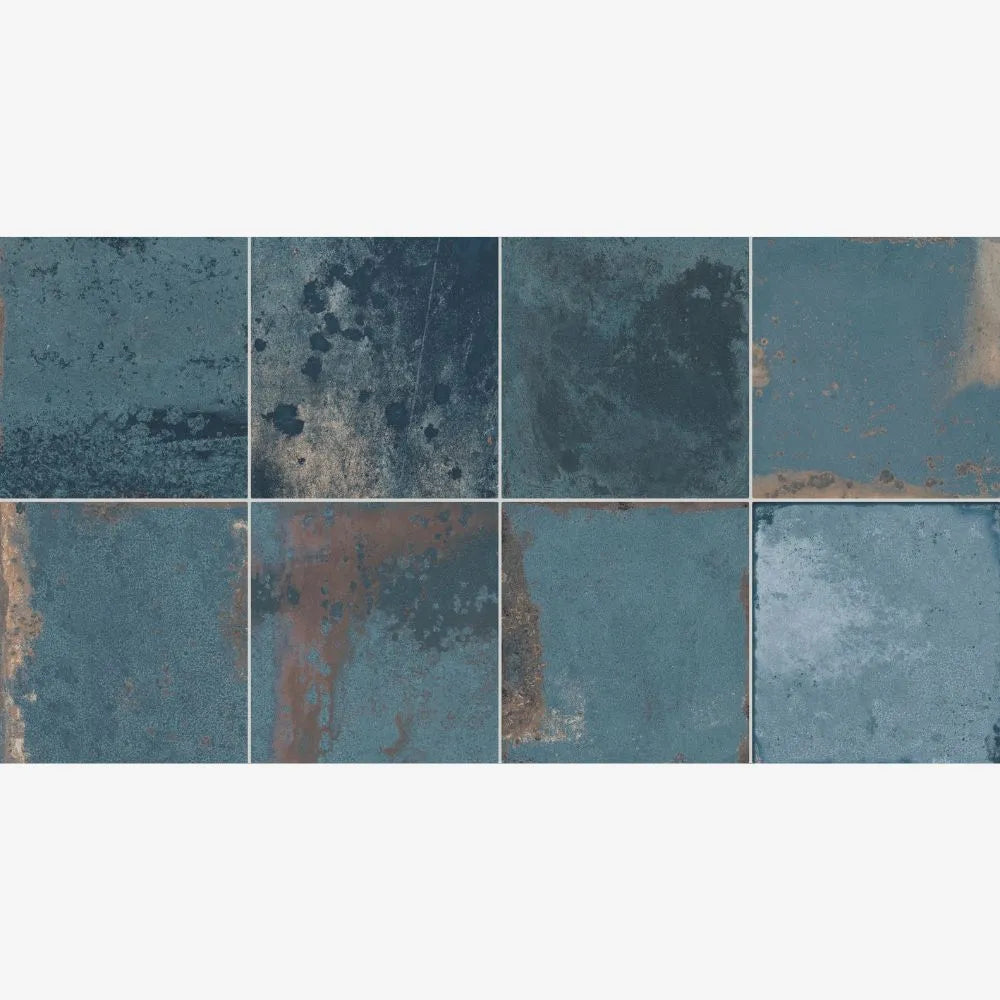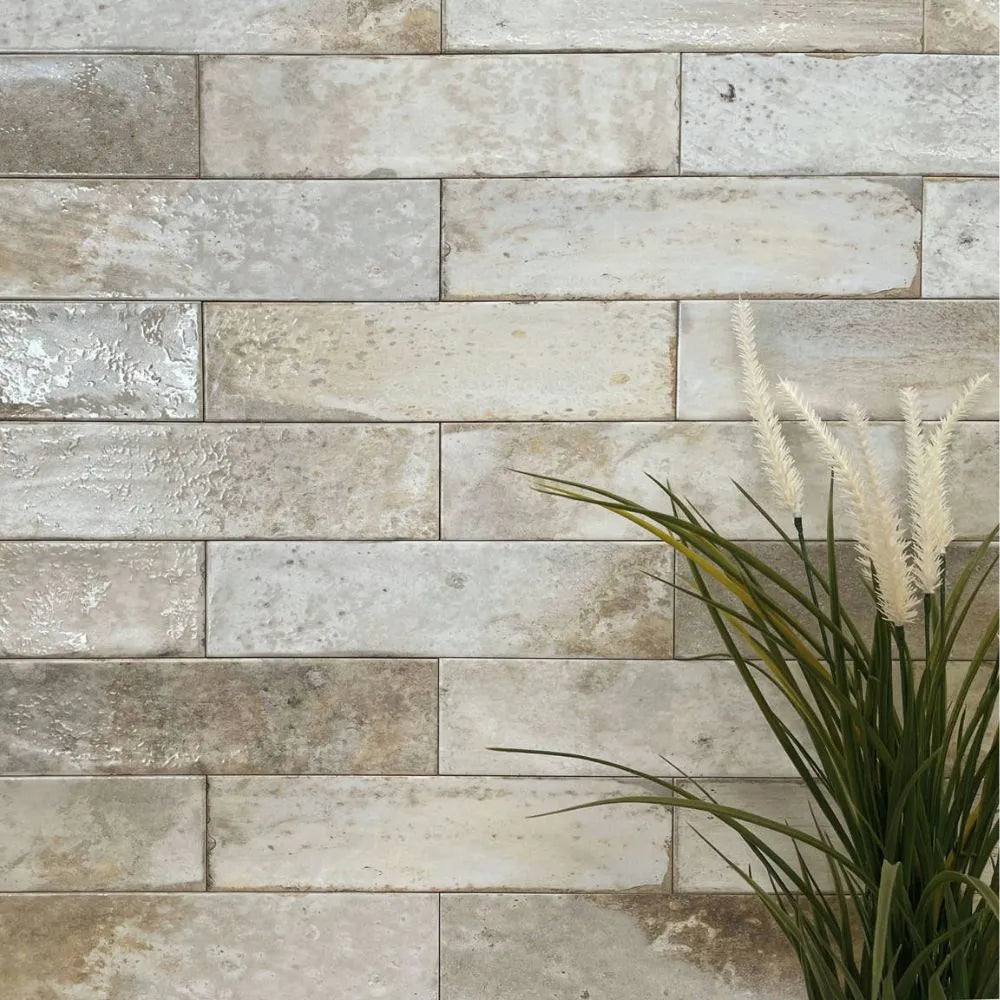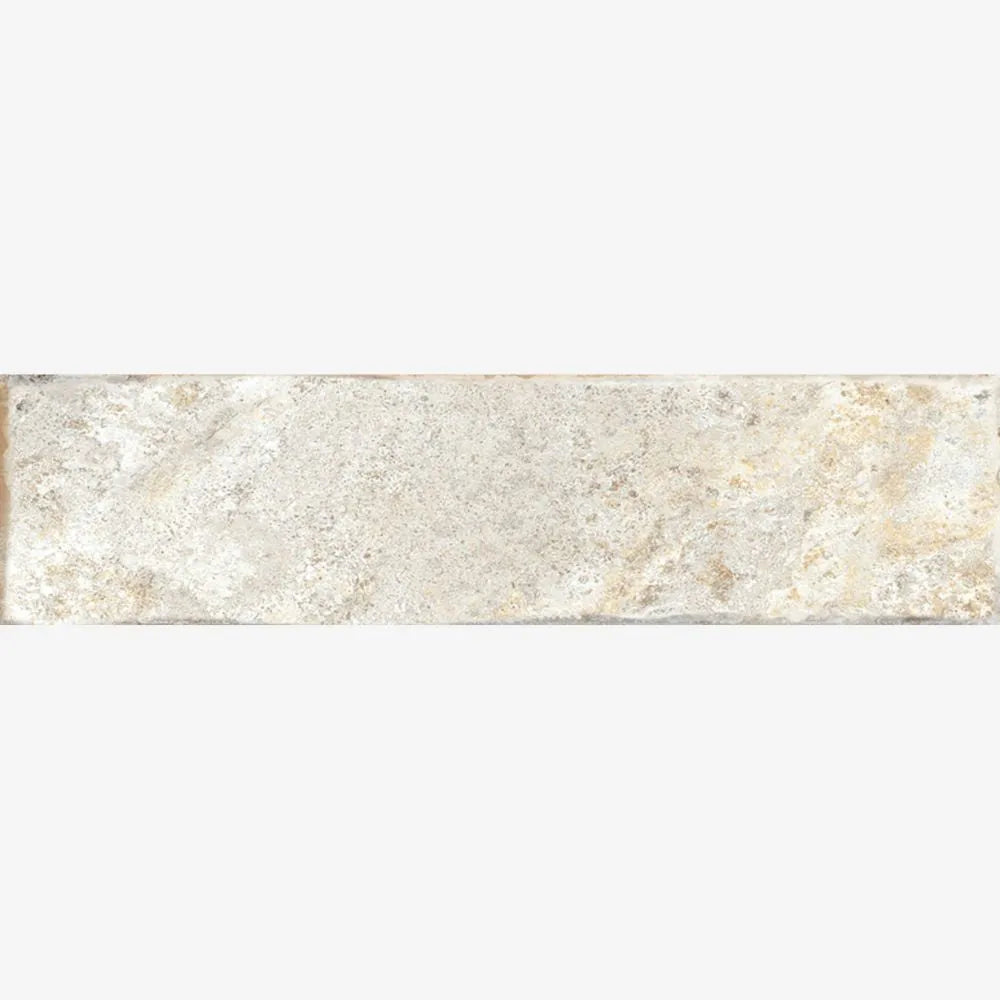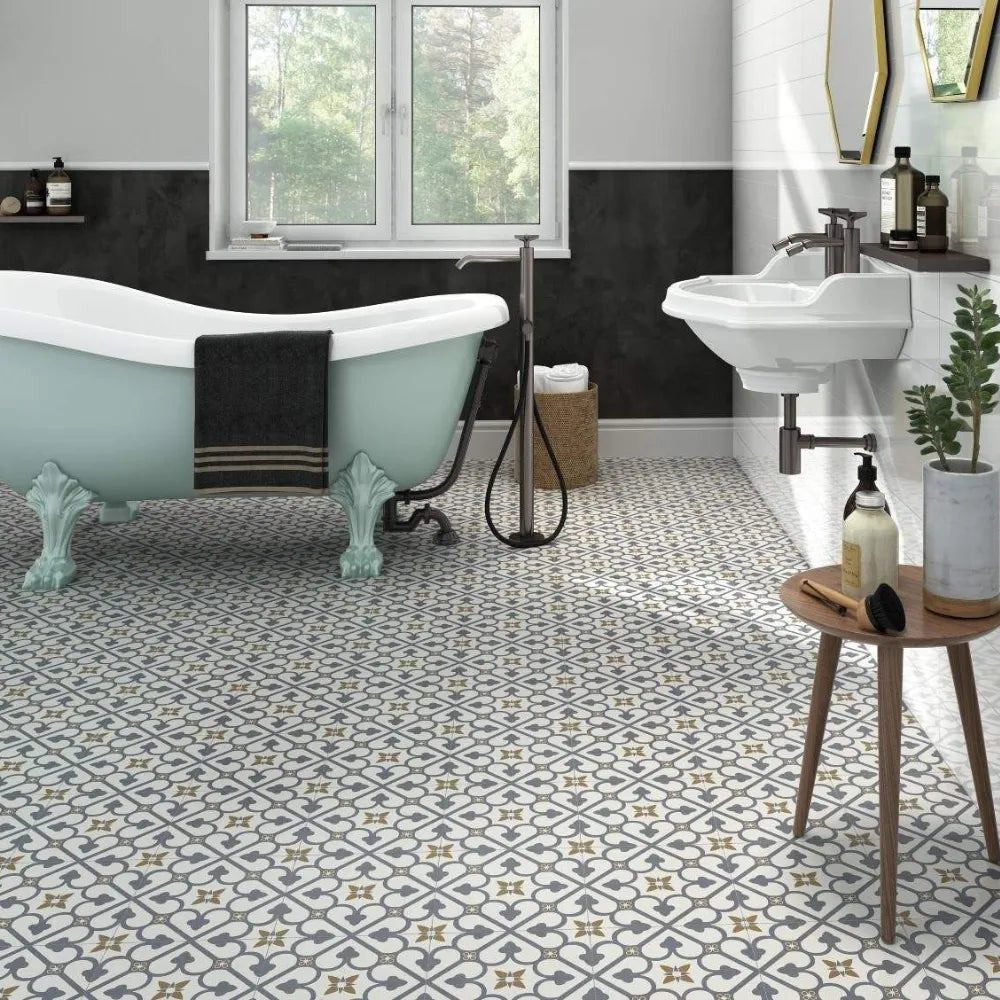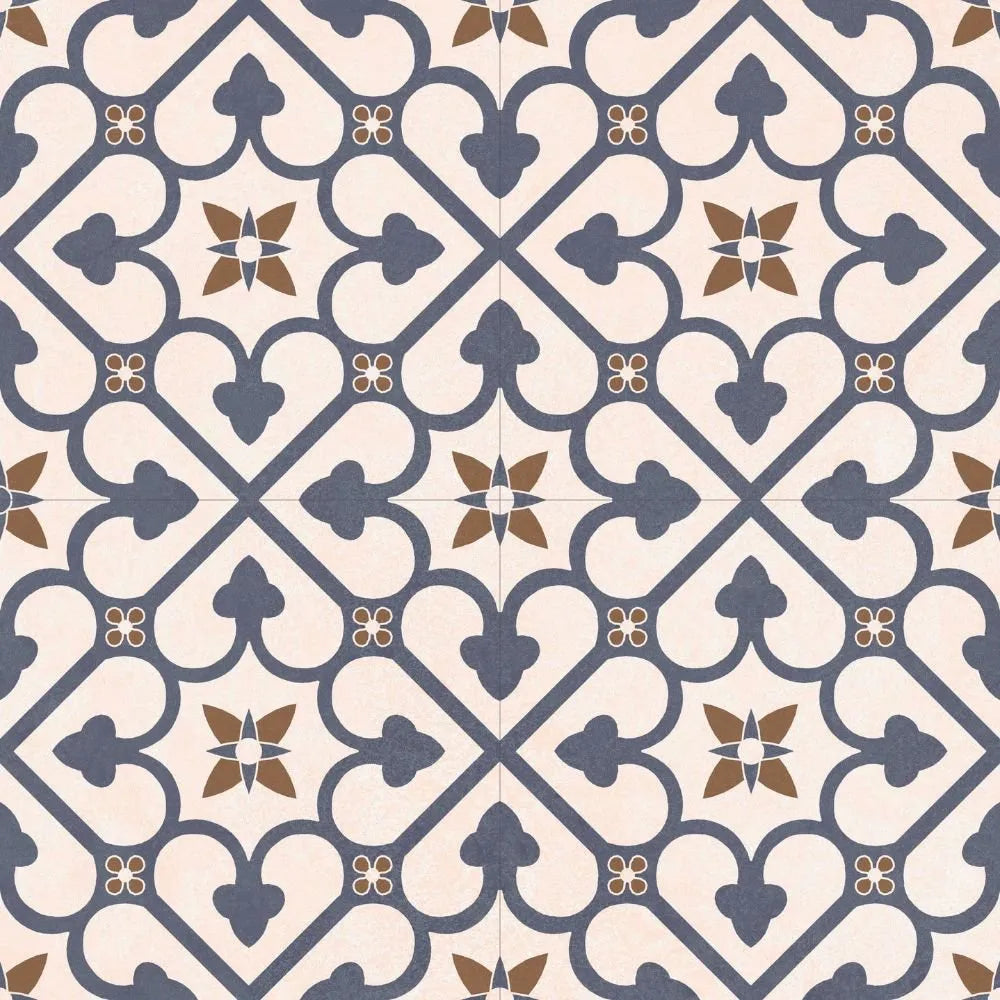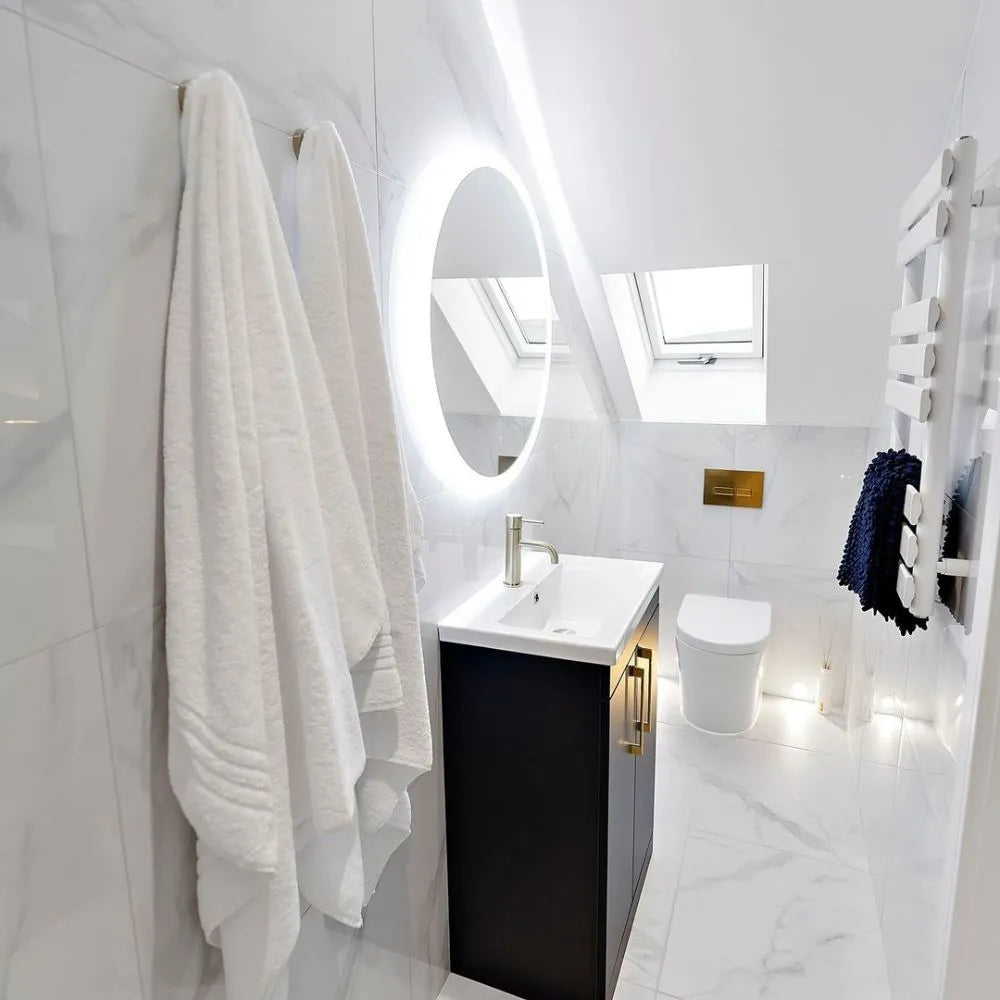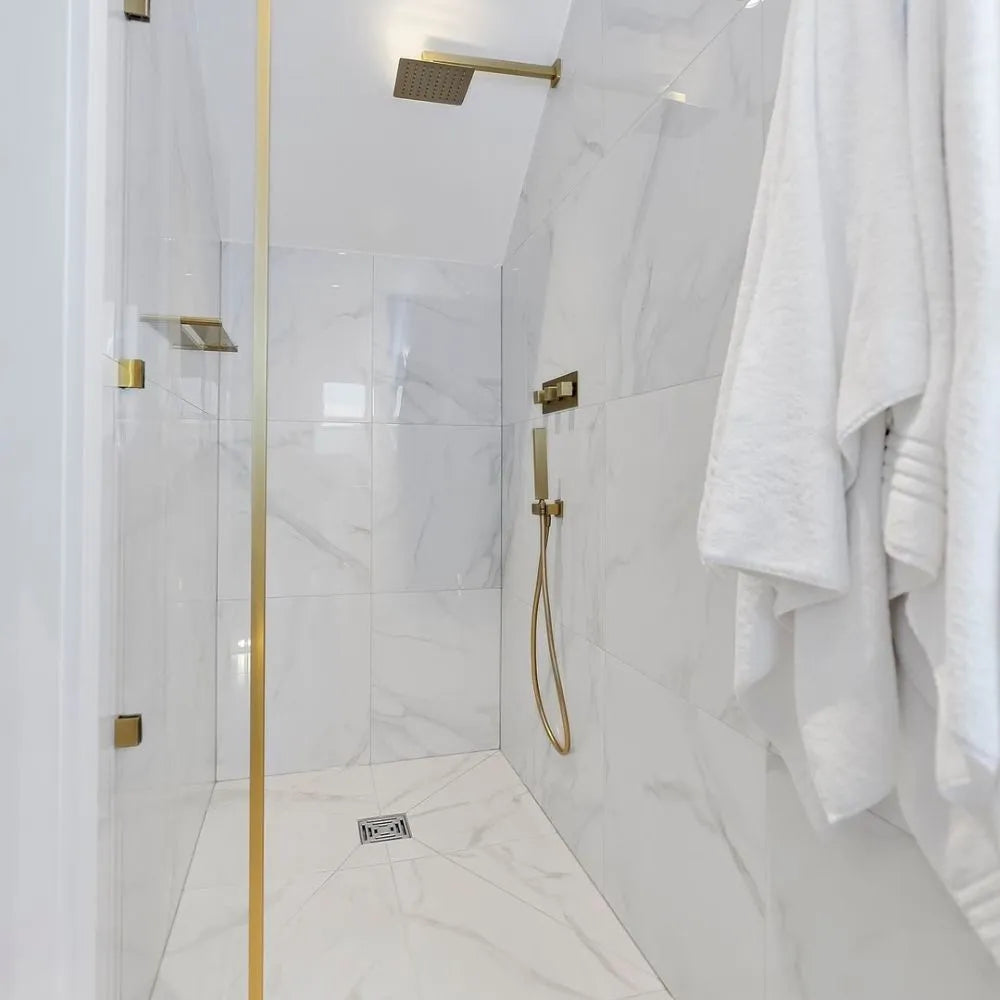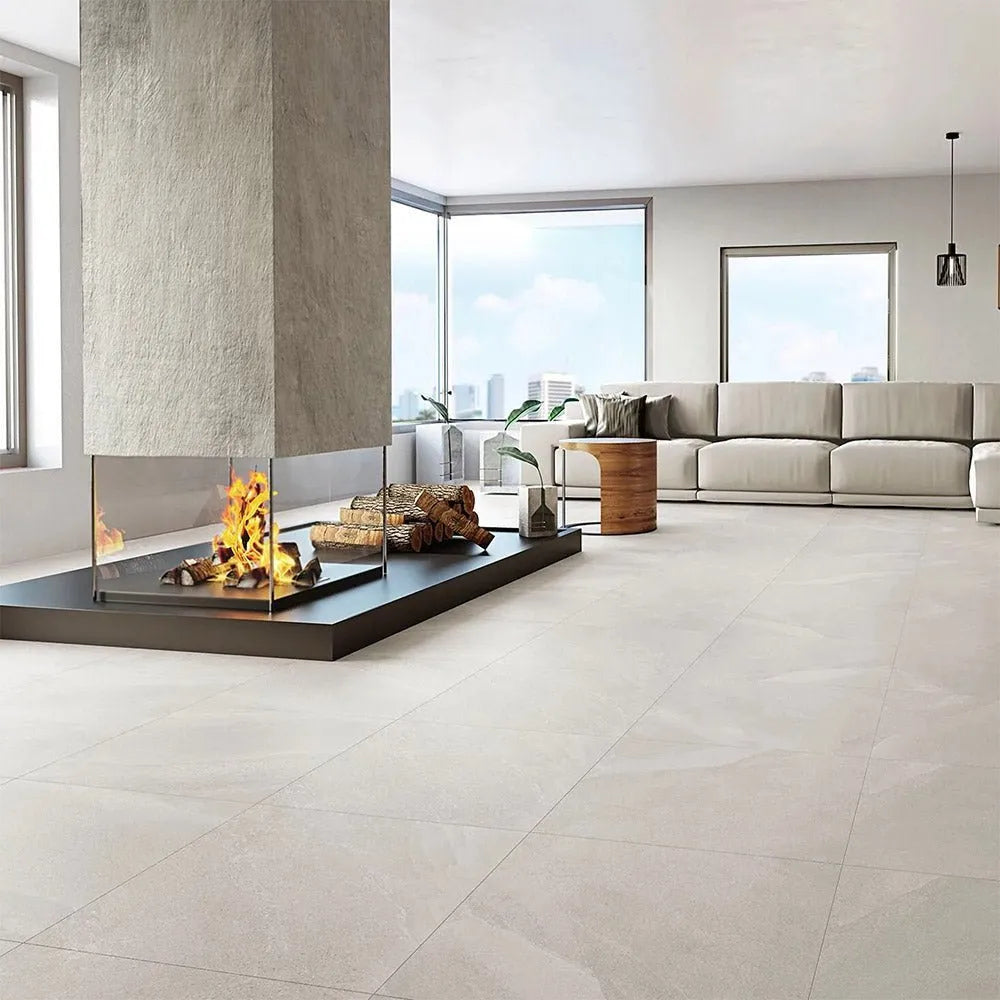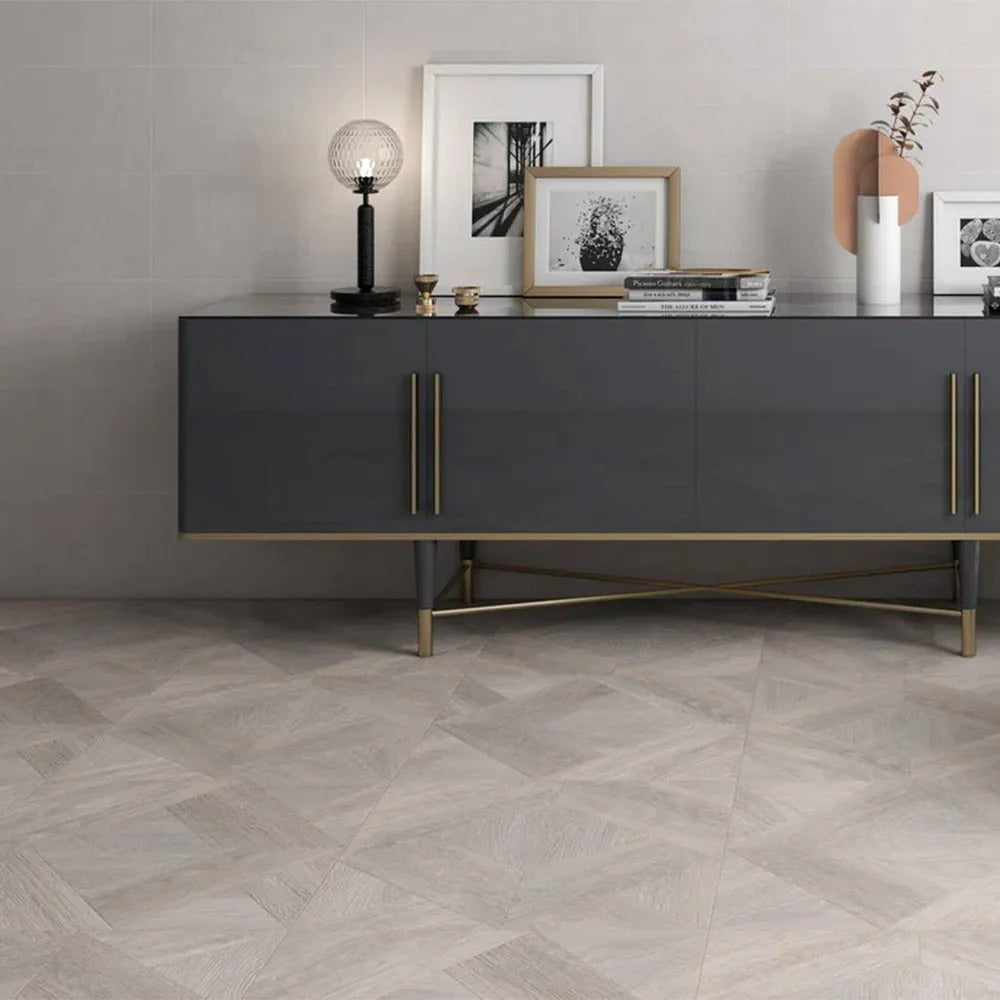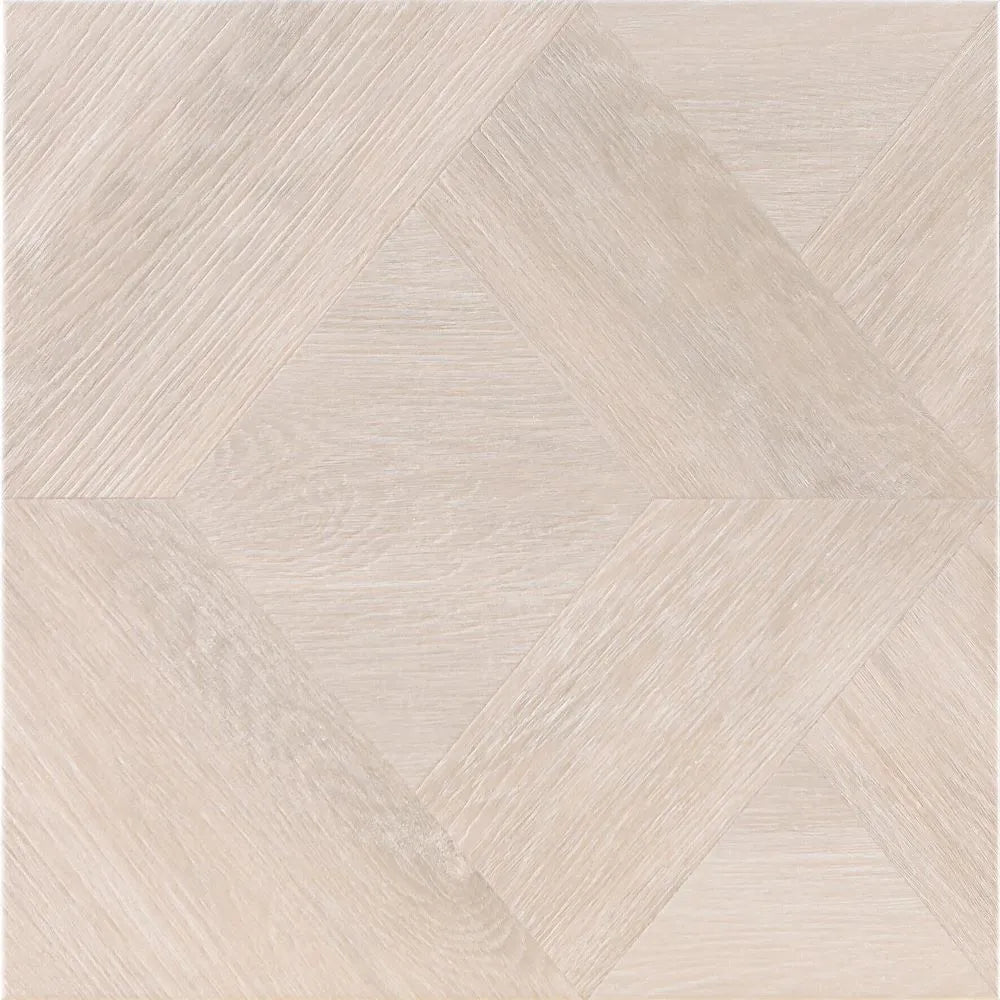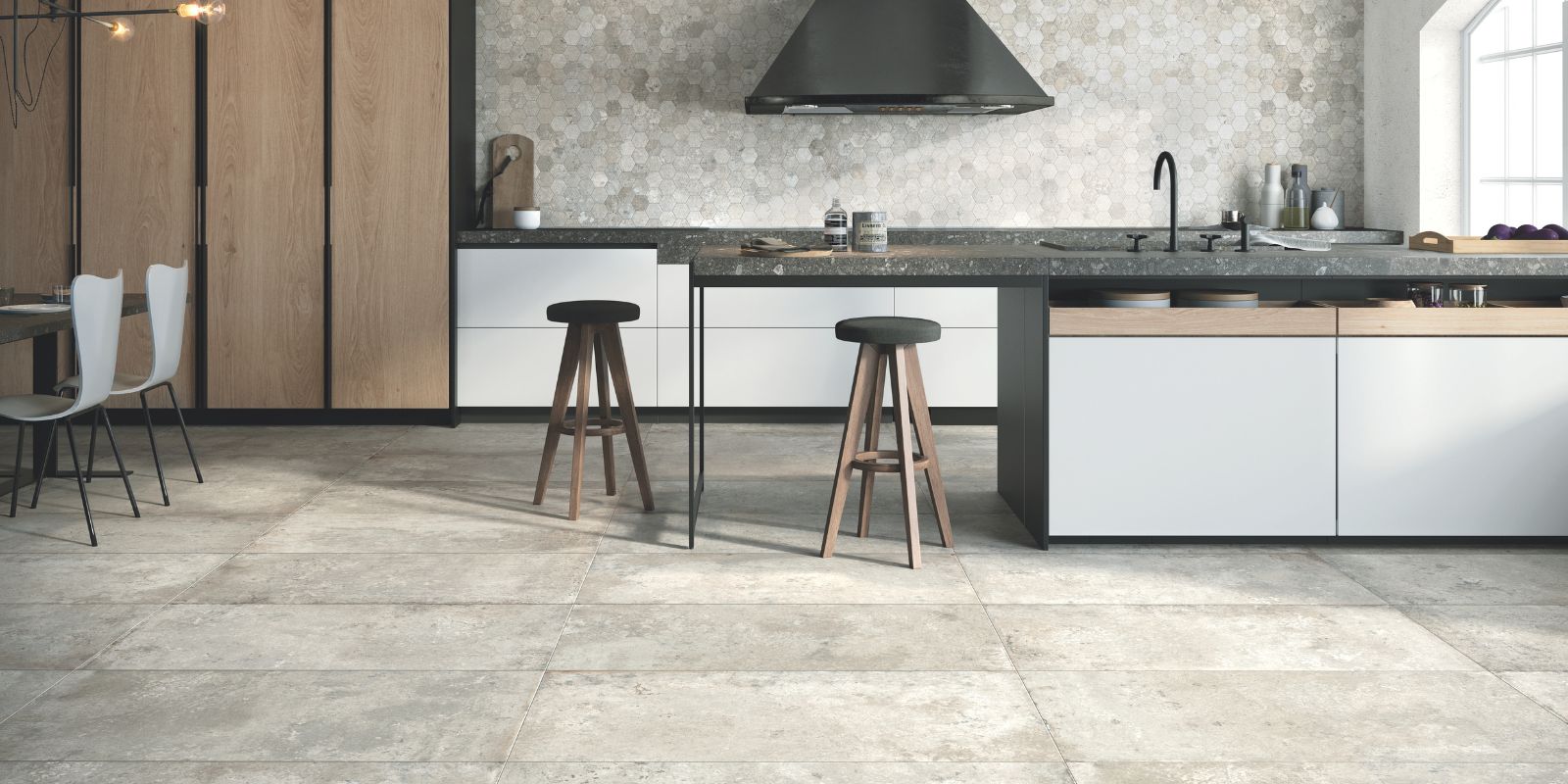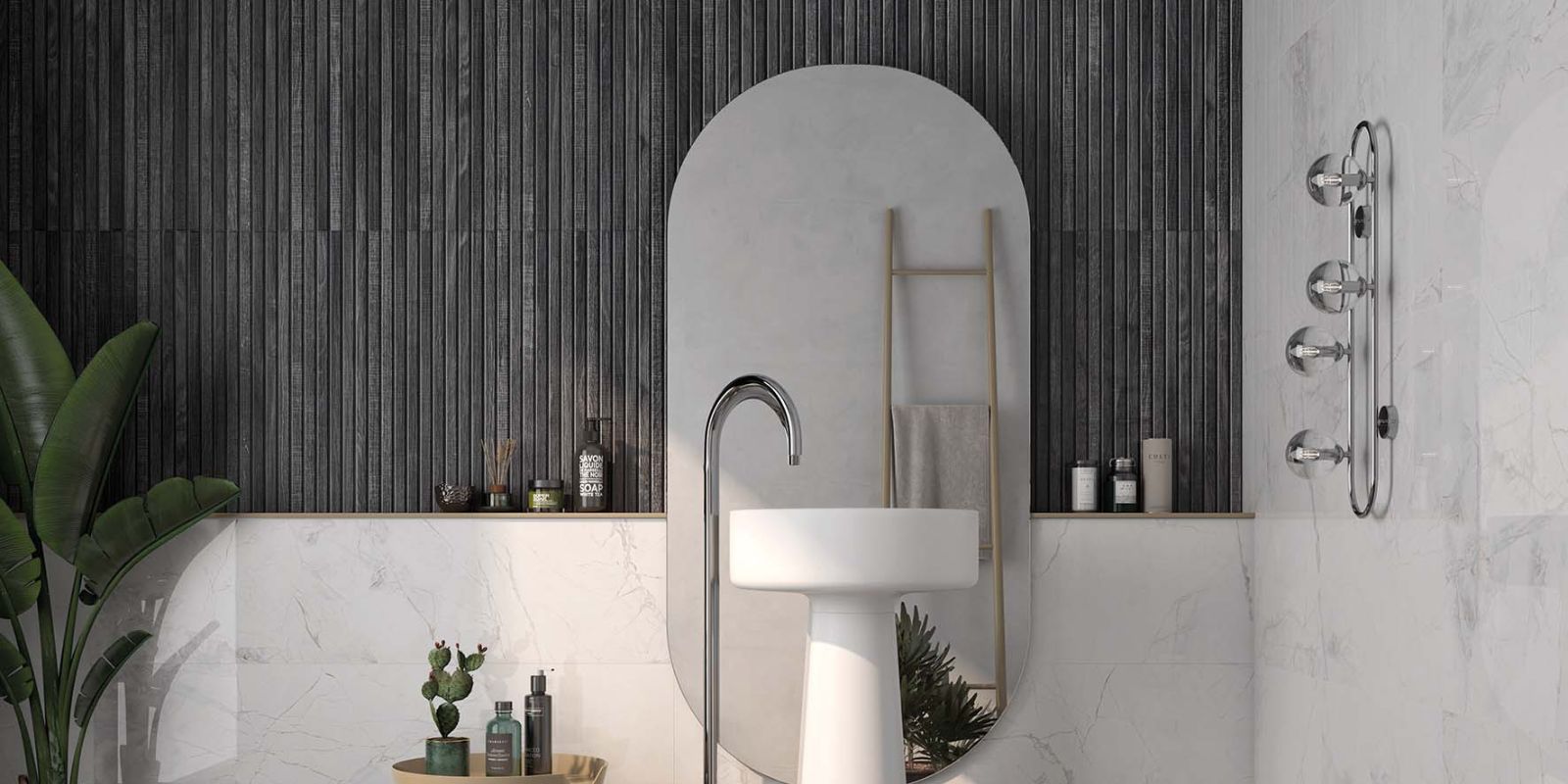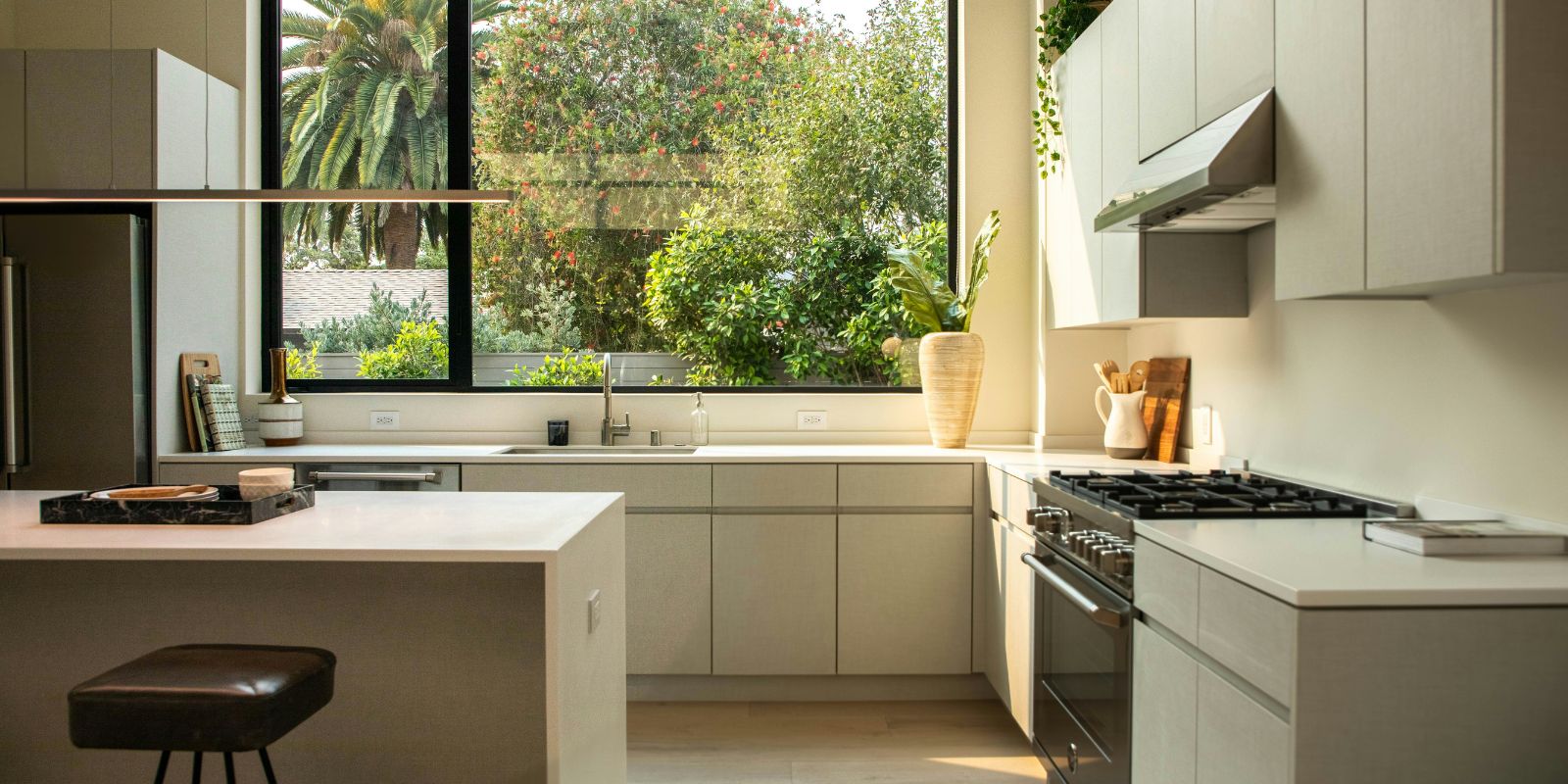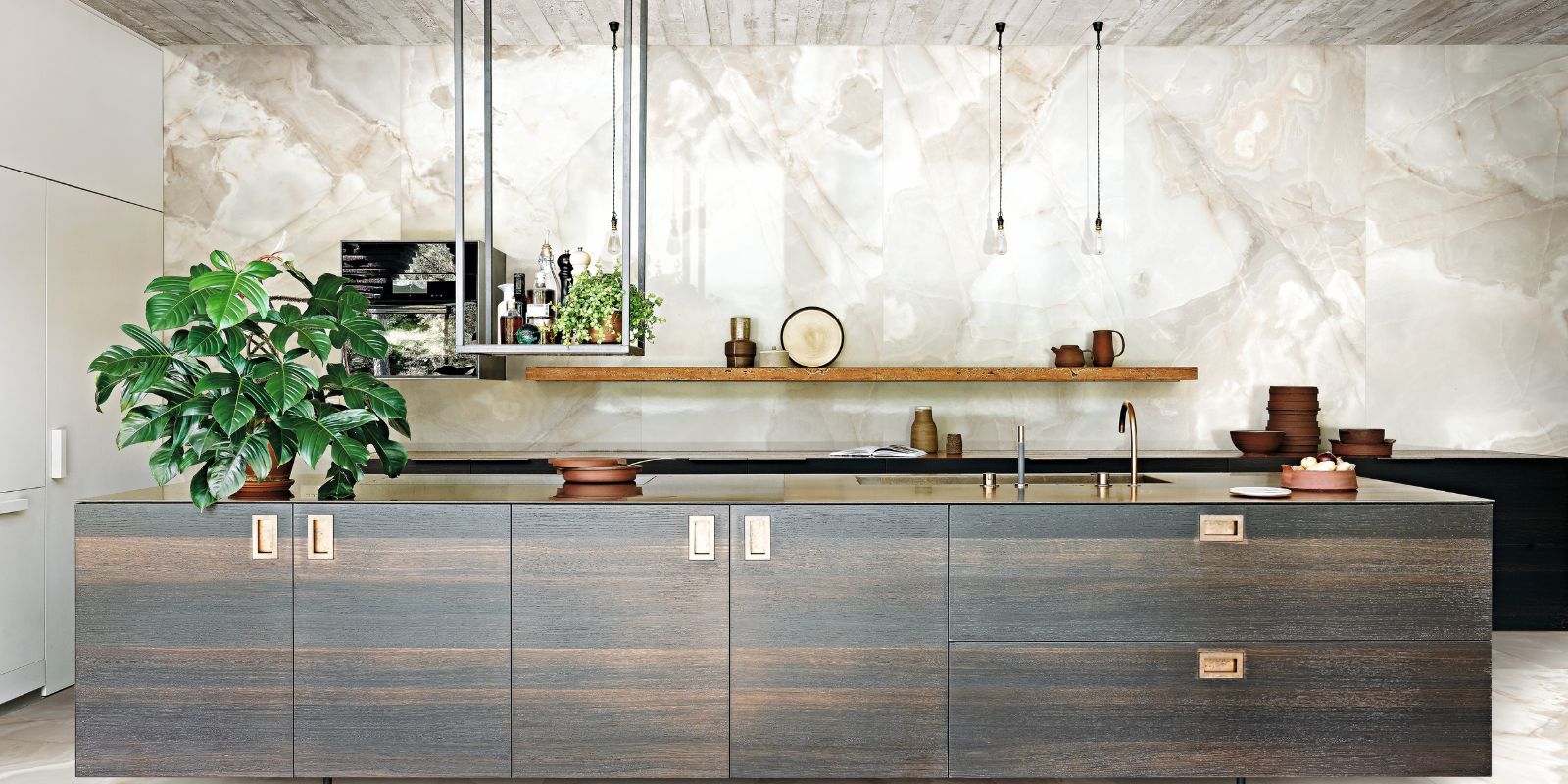
Tiling in Kitchen Ideas: Complete Guide to Stylish Kitchen Tiles
Your cooking space deserves more than basic functionality—it should be an inspiration for every meal you create. The right tiles can transform your kitchen from ordinary to extraordinary, serving as both protective surfaces and stunning design elements that reflect your personality. Beautiful tile designs can elevate your kitchen's ambiance, making it a stylish and inviting space. Whether you’re planning a complete renovation or simply looking to refresh your interiors, understanding the possibilities of kitchen tiles opens up a world of creative potential. For more inspiration or DIY tiling guidance, be sure to check out our blog.
Kitchen tiles serve dual purposes that make them essential in modern kitchen design. They protect your walls and floors from the daily challenges of cooking—from grease splatters and spills to the wear of heavy foot traffic—while simultaneously creating focal points that define your space’s character. The range of materials, patterns, and installation techniques available today means you can achieve virtually any style, from timeless elegance to bold contemporary statements. No matter your taste or requirements, our selection ensures all your kitchen tile needs and preferences are covered. For those looking to make a statement, consider patterned kitchen wall tiles. The same tiles used in the kitchen can often be applied the rest of the house, such as bathrooms and hallways, creating a thread of harmony that weaves throughout your home.
Exploring tile options online makes it easy and convenient to find the perfect fit for your kitchen project.
Key Takeaways
- Kitchen tiles serve both functional and aesthetic purposes, protecting walls while creating stunning visual statements
- Popular tile styles include subway tiles, hexagonal tiles, zellige tiles, and geometric patterns
- Backsplash areas offer the perfect opportunity for bold designs and colourful patterns
- Consider durability, maintenance, and moisture resistance when selecting kitchen tiles
- Mix materials like porcelain, ceramic, marble, and terrazzo for varied textures and visual interest throughout the house
- Professional installation ensures proper sealing and longevity of your tile investment
Essential Kitchen Tiling Areas
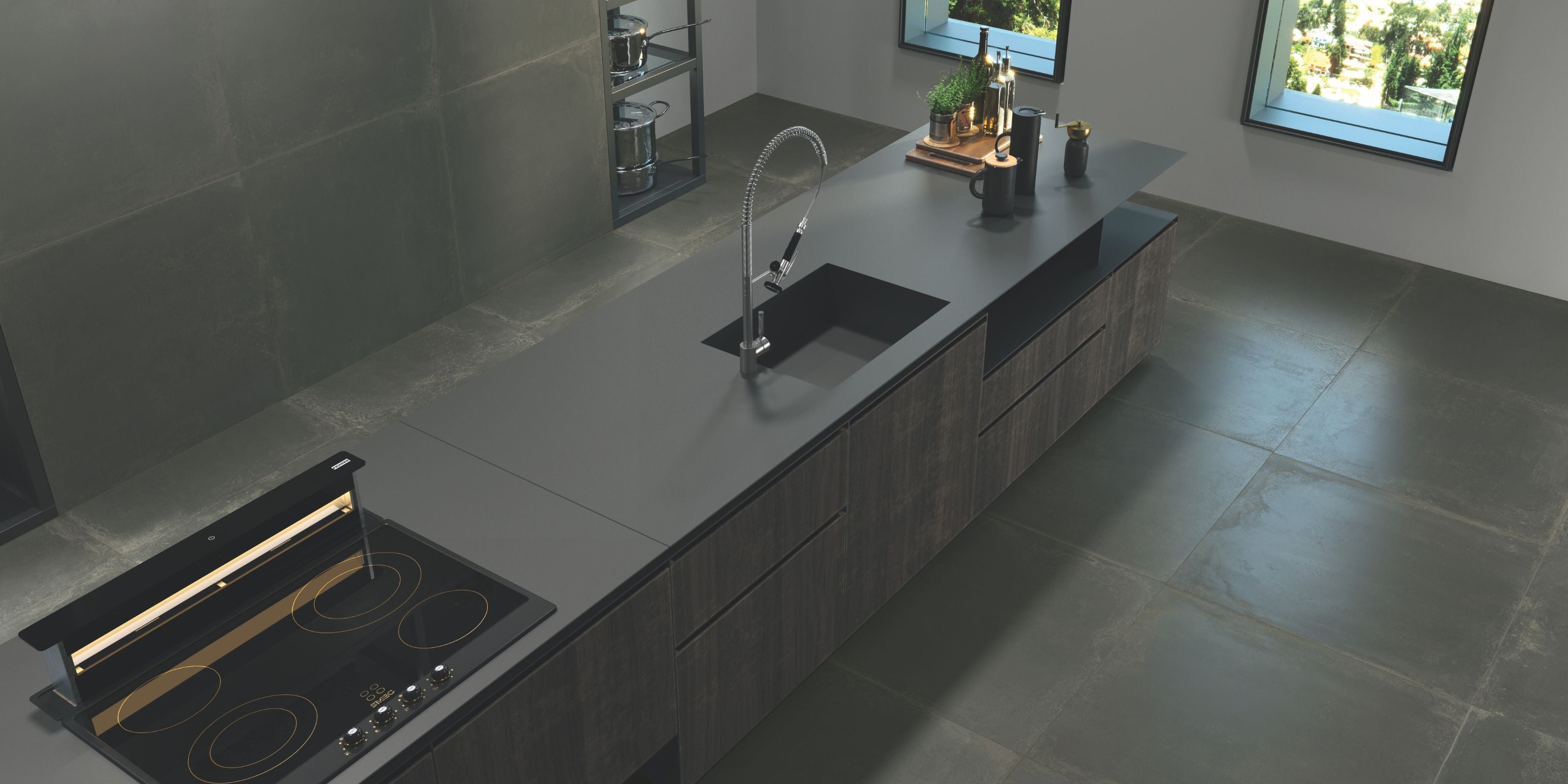
Understanding where to install tiles in your kitchen maximizes both functionality and visual impact. Each area presents unique opportunities to enhance your space while addressing specific practical needs.
Kitchen backsplashes - protection and style behind cooktops and sinks
The backsplash remains the most popular area for creative tiling ideas. This wall surface behind your cooktop and sink takes the brunt of cooking activities, making it essential for protecting your walls from grease, moisture, and stains. Modern backsplashes extend beyond mere protection, becoming the primary focal point that sets your kitchen’s tone.
Certain backsplash tiles can create a refreshing visual effect, adding a calming and rejuvenating atmosphere that enhances the overall kitchen design.
Standard backsplash heights range from 4 to 6 inches, though full-height installations create dramatic impact are a great choice too. The area directly behind your range often features different tiles or patterns to serve as a statement piece within the larger design.
Full kitchen wall tile coverage for dramatic impact and easy cleaning
Extending tiles beyond the traditional backsplash area creates seamless, low maintenance surfaces that are easy to clean. Full wall tiling works particularly well in modern kitchens where minimal grout lines and sleek surfaces complement contemporary furniture and fixtures.
This approach proves especially practical around wet areas, where traditional paint might suffer from steam and splashes. The investment in additional tiles pays off through reduced maintenance and increased durability.
Kitchen islands and peninsula sides for cohesive design
Tiling the sides of kitchen islands and peninsulas creates visual continuity throughout your space. This technique works exceptionally well when you want to complement your main backsplash design or create subtle contrast that adds depth without overwhelming the room.
Consider the island as an opportunity to test bolder patterns or colours before committing to larger areas. The relatively small surface area allows for creative expression while maintaining overall design harmony.
Floor tiling for high-traffic durability and water resistance
Kitchen floors demand tiles that can withstand constant use, spills, and the occasional dropped item. Durable materials like porcelain provide the strength needed for this application, while proper installation and regular grout maintainence using sealant ensures longevity that makes the investment worthwhile.
Floor tiles typically feature slightly different specifications than wall tiles, with enhanced slip resistance and impact durability. The patterns and layouts you choose for floors can visually expand small kitchens or create defined zones in open-plan spaces.
Window surrounds and niche areas for accent details
Small areas around windows, inside shelving niches, or around architectural features offer perfect opportunities for accent tiles that add personality without overwhelming your design. These spaces work well for handcrafted or patterned tiles that might be too bold for larger applications.
Popular Kitchen Tile Styles and Materials
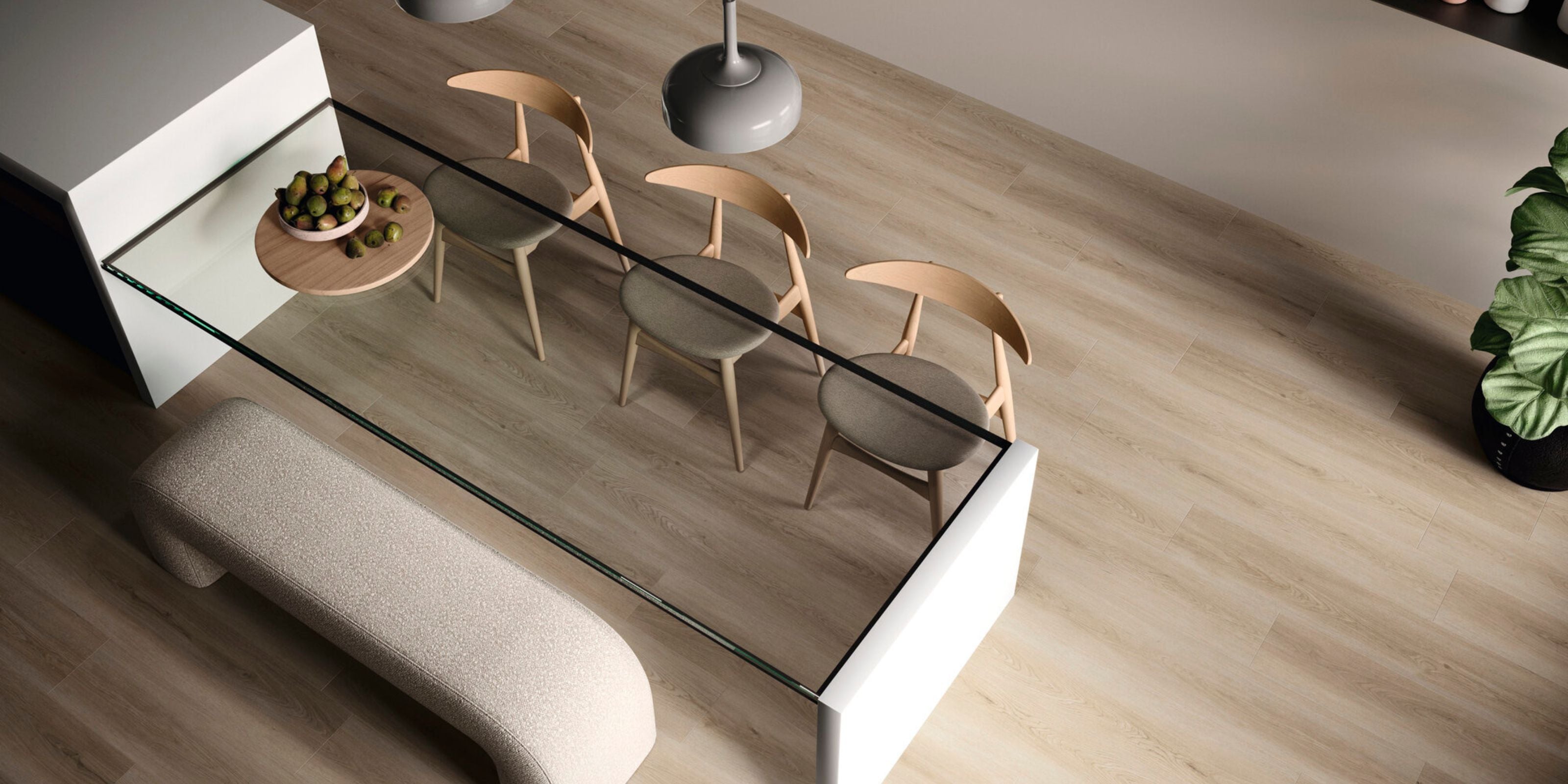
The variety of available tiles means you can achieve virtually any aesthetic while meeting your practical requirements. Certain tile styles, such as Terrazzo Effect Tiles, really pack a punch when it comes to visual impact, adding dimension and flair to your space. Understanding the characteristics of different materials and styles helps you make informed decisions that serve your space for years to come.
Subway tiles are the perfect way to create a timeless appeal
Subway tiles remain enduringly popular for good reason. Their clean lines and versatile format work with virtually any kitchen style, from traditional to modern. Tiles in various sizes can be arranged in multiple patterns to create different visual effects and suit diverse kitchen styles. Larger subway tiles tend to provide a sleek, seamless look that can visually expand the space, while smaller tiles allow for intricate designs and greater flexibility, especially in detailed or curved areas. Mixing sizes within a single installation can add artistic flair and create custom, unique appearances that enhance the character of your kitchen.
These rectangular tiles can be installed in various patterns—traditional running bond, vertical stack, or even herringbone—to create different visual effects within the same material. Their neutral appearance serves as an excellent backdrop for colourful accessories or bold furniture choices.
Hexagonal tiles for geometric interest and modern flair
Hexagonal tiles introduce geometric sophistication that works particularly well in contemporary kitchens. The six-sided shapes create natural patterns that add visual interest without requiring complex installation techniques.
The honeycomb pattern created by hexagonal tiles naturally draws the eye, making them excellent choices for feature walls or backsplash areas where you want to create impact.
Zellige tiles with handcrafted irregularities and natural variations
Moroccan zellige tiles bring artisanal character to modern kitchens. Each tile displays slight variations in colour, texture, and edges that reflect the centuries-old handcrafting process. This natural irregularity creates depth and warmth that perfectly complements both rustic and sophisticated design schemes.
Zellige tiles require careful installation and sealing, but their unique beauty and cultural heritage make them worth the extra investment for some homeowners seeking distinctive character in their cooking space.
Mosaic tiles including glass, stone, and ceramic options
Mosaic tiles open up endless creative possibilities through their small format and diverse materials. Glass mosaics reflect light beautifully, making small kitchens appear larger and brighter. Stone mosaics add natural texture and earthy tones, while ceramic mosaics offer unlimited colour options at budget-friendly prices.
The small size of mosaic tiles makes them ideal for curved surfaces, detailed borders, or intricate patterns that larger tiles cannot achieve. They work exceptionally well as accent bands within larger tile installations.
Large format porcelain tiles for seamless contemporary looks
Large format tiles create the sleek, minimal aesthetic that defines contemporary kitchen design. They reduce grout lines to create nearly seamless surfaces that emphasize clean, uncluttered styling. Modern manufacturing techniques allow porcelain tiles to achieve very large sizes, though such large formats require professional installation.
These tiles work particularly well for creating the illusion of space in smaller kitchens, where fewer grout lines create visual continuity that makes rooms appear larger.
Natural stone tiles like marble, travertine, and slate
Natural stone brings irreplaceable authenticity and character to kitchen design. Each piece displays unique mineral patterns and colour variations that cannot be replicated in manufactured materials. However, natural stone requires more careful selection and maintenance than ceramic or porcelain alternatives.
Ceramic and Porcelain Options
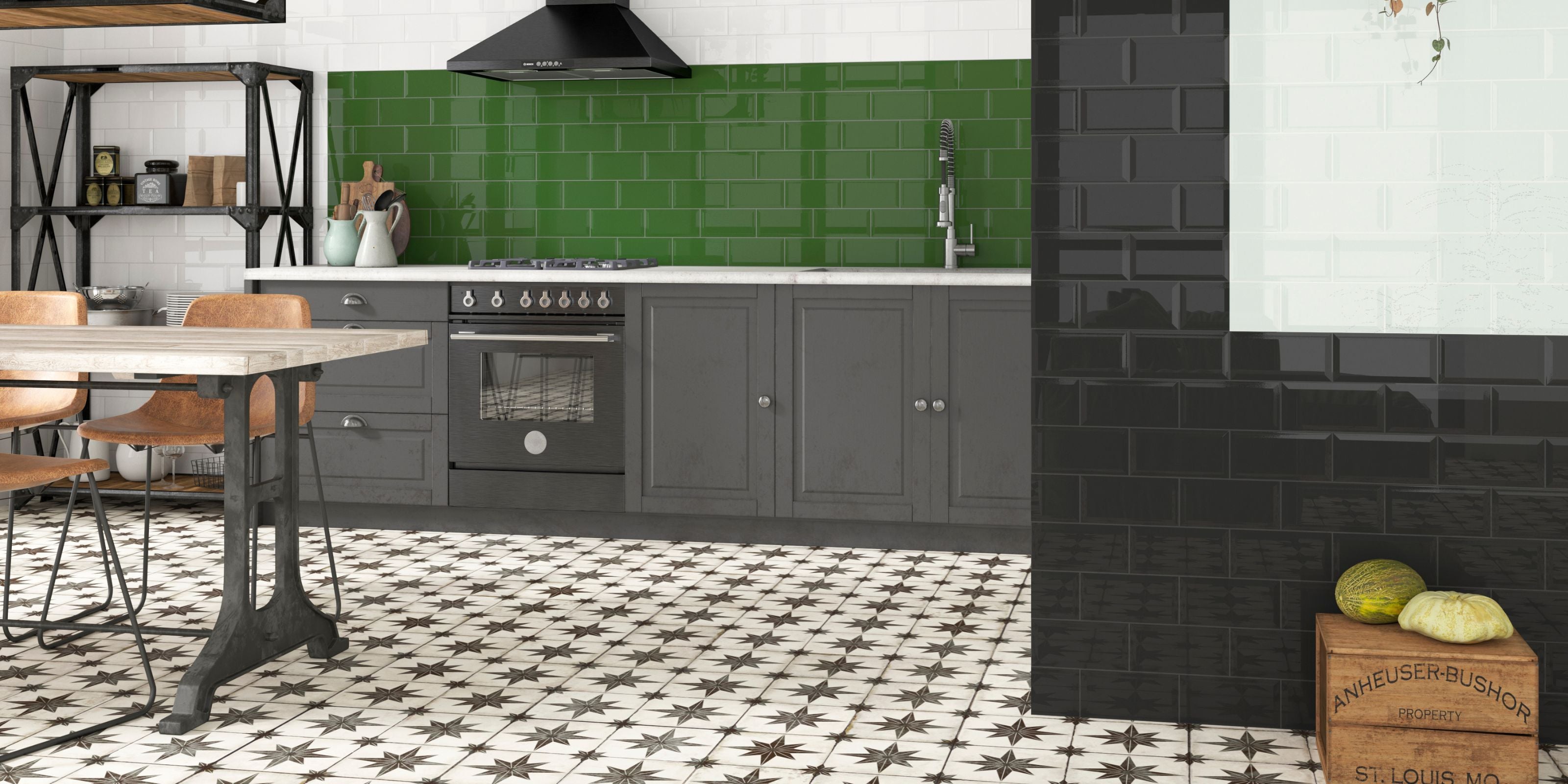
Understanding the differences between ceramic and porcelain tiles helps you select the right material for your specific application and budget requirements.
Ceramic tiles for easy maintenance and colour variety
Ceramic tiles offer excellent value for wall applications and areas with minimal wear. The glazed surface provides stain resistance and easy cleaning, while the wide range of available colours and finishes makes it simple to match any design scheme. These tiles work particularly well for backsplashes and other wall applications where their lower durability under pressure isn’t a concern.
The manufacturing process allows for virtually unlimited colour options, including bold hues that might be difficult to achieve in natural materials. This flexibility makes glazed ceramic an excellent choice for creating accent areas or testing colour schemes.
Porcelain tiles with superior durability and stain resistance
Porcelain tiles represent the premium choice for kitchen applications. Made from finer clays and fired at higher temperatures, porcelain achieves superior density and water resistance. With absorption rates below 0.5%, these tiles perform exceptionally well as floor tiles in wet areas and high-traffic zones.
Modern porcelain manufacturing creates tiles that convincingly mimic natural materials like wood and stone while providing superior performance. This combination of aesthetics and functionality makes porcelain an increasingly popular choice for discerning homeowners.
Wood-look porcelain for warmth without moisture concerns
Wood-look porcelain tiles deliver the warmth and beauty of natural timber without the moisture sensitivity that makes real wood problematic in kitchens. Advanced printing techniques create grain patterns and colour variations that closely replicate various wood species.
These tiles work particularly well for kitchen floors, where the warmth of wood aesthetics combines with the durability needed for heavy use. The low maintenance requirements make them a practical choice for busy family kitchens.
Marble-effect porcelain for luxury appearance at lower cost
Marble-effect porcelain provides the elegance of natural marble without the maintenance requirements and acid sensitivity. Modern manufacturing techniques capture the veining patterns and colour subtleties of premium marbles like Carrara, making marble effect floor tiles virtually indistinguishable from the natural stone.
This option allows you to achieve a luxurious appearance while maintaining the practical benefits of porcelain’s durability and stain resistance.
Natural Stone Choices
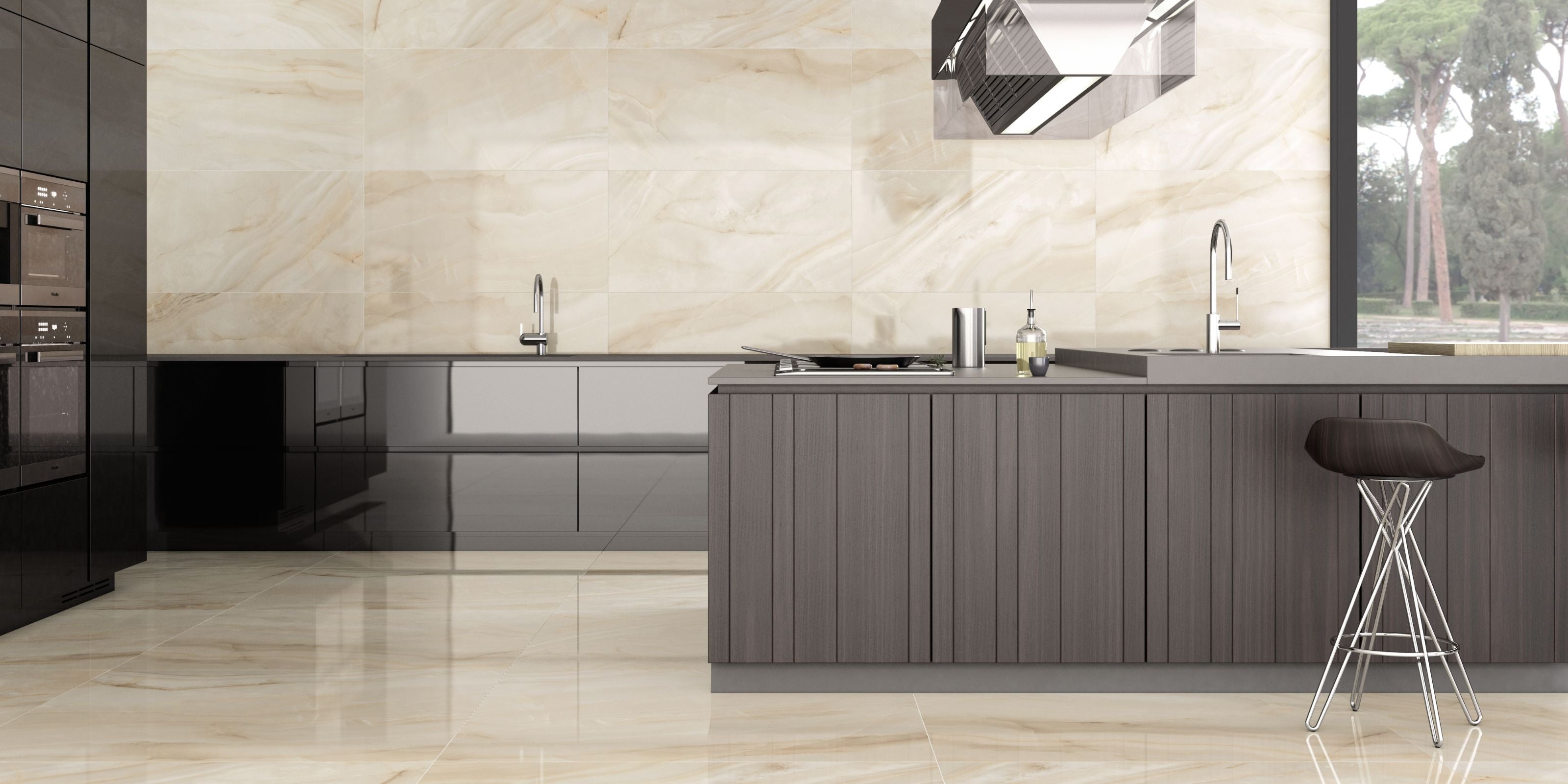
Natural stone tiles bring unique character and authenticity to kitchen design, though each type requires specific consideration for maintenance and application.
Carrara marble for classic elegance and veining patterns
Carrara marble from Italy represents the gold standard for elegant kitchen design. Its characteristic gray veining against a white background creates timeless beauty that complements both traditional and contemporary styles. The natural variation ensures that no two installations are identical, providing truly custom results.
However, marble demands regular sealing and attentive upkeep to protect against staining and etching caused by acidic substances. This higher maintenance requirement must be weighed against its unmatched aesthetic appeal.
Travertine for rustic texture and earth-tone beauty
Travertine offers a more casual, textured alternative to polished marble. Its naturally pitted surface and warm earth tones create inviting, rustic character that works well in Mediterranean and farmhouse-style kitchens. The material’s porosity requires regular sealing but provides excellent slip resistance for floor applications.
The natural banding and colour variation in travertine creates organic patterns that suit kitchens where you want to emphasize natural, unpolished beauty over formal elegance.
Slate tiles for dramatic dark colours and natural slip resistance
Slate provides dramatic colour options in deep grays, blues, and blacks that create sophisticated, moody atmospheres. Its naturally textured surface offers excellent slip resistance, making it a practical choice for kitchen floors. The material’s density and low porosity make it more durable than many other natural stones.
Quality varies significantly in slate, so careful selection prevents issues like spalling (flaking) that can occur with inferior grades. Proper sealing maintains the stone’s appearance and performance over time.
Quartzite for durability and unique mineral patterns
Quartzite represents one of the hardest natural stones available, combining exceptional durability with striking mineral patterns and veining. This material offers superior performance compared to other natural stones while maintaining the authentic character that only genuine stone can provide.
The limited availability and specialized cutting requirements typically make quartzite more expensive than other options, but its unmatched combination of beauty and performance justifies the investment for many homeowners.
Creative Backsplash Design Ideas
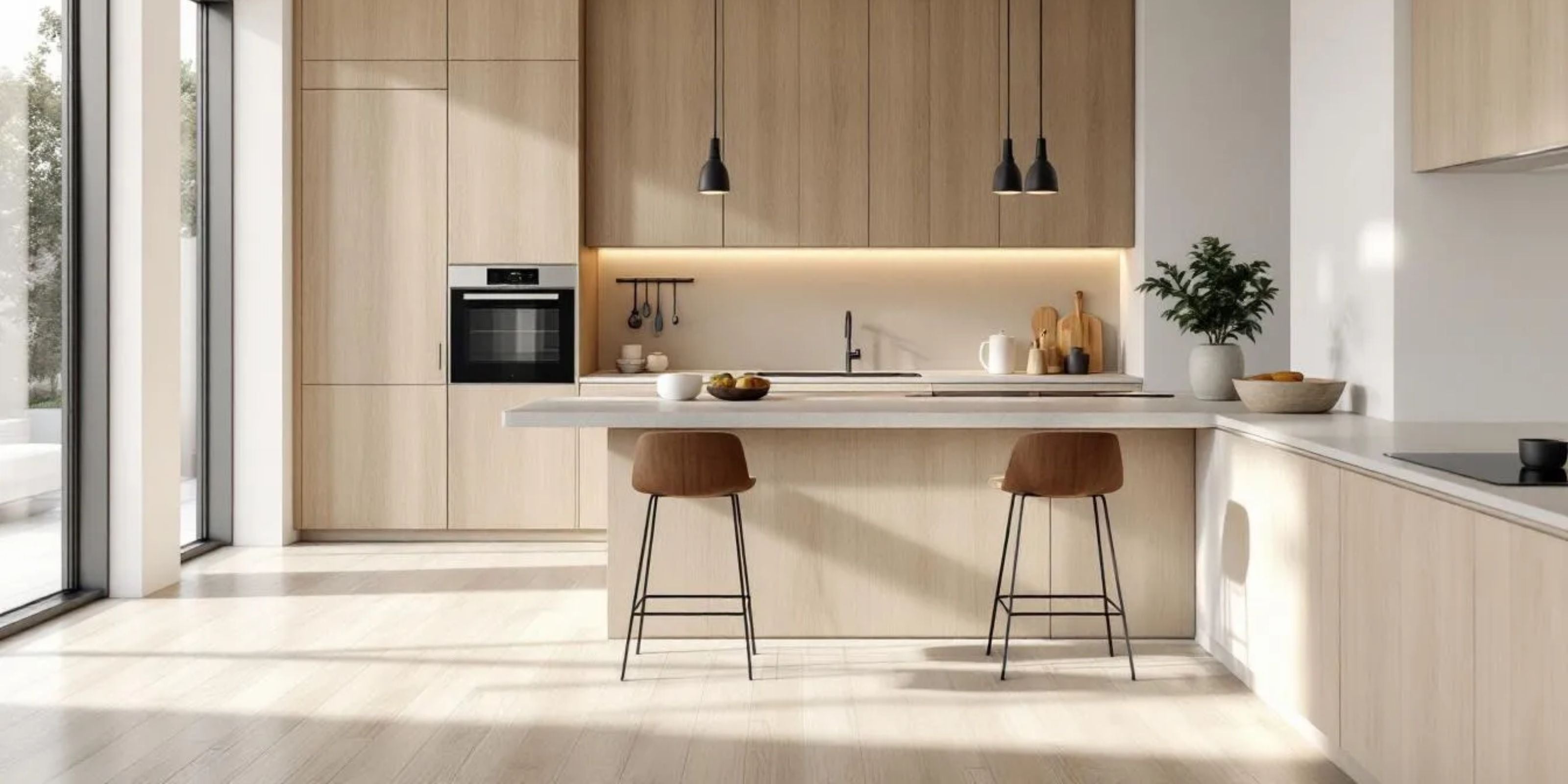
Our backsplash offers the perfect canvas for creative expression while serving essential protective functions. These design approaches help you create focal points that reflect your personal style.
Chevron patterns using rectangular tiles for dynamic visual movement
Chevron patterns create energetic, directional movement that draws attention and adds sophistication to any kitchen. Using standard rectangular tiles arranged in V-shaped patterns, this layout technique transforms simple materials into striking design statements. The pattern works particularly well behind ranges or as full-wall treatments where you want to create dramatic impact.
The key to successful chevron installation lies in precise measurement and planning. Professional installation ensures the pattern remains Yconsistent and visually compelling throughout the installation.
Herringbone layouts with subway tiles for sophisticated geometry
Herringbone patterns offer a more subtle geometric approach than chevron while still creating visual interest and movement. This classic pattern works exceptionally well with subway tiles, transforming the familiar format into something more sophisticated and custom-appearing.
The alternating diagonal arrangement creates texture and depth that catches light differently throughout the day, adding dynamic visual interest to your cooking space. This pattern complements both traditional and contemporary kitchen styles.
Vertical stack bonds to emphasize ceiling height
Installing tiles in vertical orientations draws the eye upward, making kitchens with standard ceiling heights appear taller and more spacious. This technique works particularly well with rectangular tiles like subway or larger format pieces.
Vertical installations create clean, modern lines that complement contemporary kitchen design while maximizing the perceived height of your space. The technique proves especially valuable in galley kitchens or other narrow spaces where height emphasis improves proportions.
Mixed tile sizes in random patterns for artistic flair
Combining different tile sizes within a single installation creates custom, artisanal appearances that suggest bespoke design. This approach works well with natural stone tiles where size variation emphasizes the material’s organic character.
Random patterns require careful planning to ensure balanced distribution of sizes and colours throughout the installation. The result creates unique, personalized designs that cannot be replicated elsewhere.
Colour-blocking with contrasting tile colours for bold statements
Using contrasting colours in geometric arrangements creates bold, contemporary statements that serve as artwork within your kitchen. This technique works particularly well when you want to create focal points without introducing complex patterns or textures.
Successful colour-blocking requires careful consideration of your kitchen’s overall colour palette to ensure the bold treatment complements rather than competes with other design elements.
Hand-painted custom tiles featuring personal motifs or landscapes
Custom hand-painted tiles transform functional surfaces into personal art galleries. These bespoke pieces can incorporate family motifs, favourite landscapes, or cultural references that make your kitchen truly unique. While more expensive than standard tiles, custom pieces create irreplaceable personal connections to your space.
Working with local artists or specialized tile painters allows you to create one-of-a-kind designs that reflect your family’s personality and interests.
Bold Pattern Applications
Incorporating globally inspired patterns adds cultural richness and visual excitement to kitchen design while celebrating diverse artistic traditions.
Moroccan-inspired geometric tiles in blues, greens, and terracotta
Moroccan geometric patterns bring centuries of artistic tradition to contemporary kitchens. The intricate mathematical relationships create mesmerizing visual effects while the traditional colour palette of blues, greens, and terracotta adds warmth and earthiness to modern spaces.
These patterns work particularly well as accent areas or feature walls where their complexity can be appreciated without overwhelming the space. The rich cultural heritage adds depth and meaning to your kitchen design.
Spanish azulejo tiles with historical scenes and cultural motifs
Traditional Spanish azulejo tiles feature painted scenes, historical narratives, and cultural motifs that transform kitchens into storytelling spaces. These tiles often depict landscapes, religious scenes, or daily life activities that connect your modern kitchen to Spanish artistic traditions.
Installing azulejo tiles creates conversation pieces while adding authentic cultural elements that reflect Spain’s rich ceramic heritage. The hand-painted quality brings artisanal character to contemporary design.
Brutalist-inspired three-dimensional tiles for sculptural walls
Three-dimensional tiles create sculptural wall surfaces that play with light and shadow throughout the day. These bold, architectural elements work well in contemporary kitchens where you want to make strong design statements.
The geometric forms and dramatic shadows created by 3D tiles add architectural interest while maintaining the practical benefits of tiled surfaces. This approach works particularly well in open-plan spaces where the kitchen walls are visible from other areas.
Talavera tiles in vibrant colours for southwestern charm
Mexican Talavera tiles bring vibrant colours and folk art traditions to kitchen design. The hand-painted designs feature bold floral patterns, geometric motifs, and cultural symbols that inject personality and warmth into cooking spaces.
These tiles work exceptionally well in kitchens where you want to celebrate Mexican culture or create casual, welcoming atmospheres. The irregular, handcrafted quality adds authenticity and charm that mass-produced tiles cannot match.
Colour Schemes and Combinations
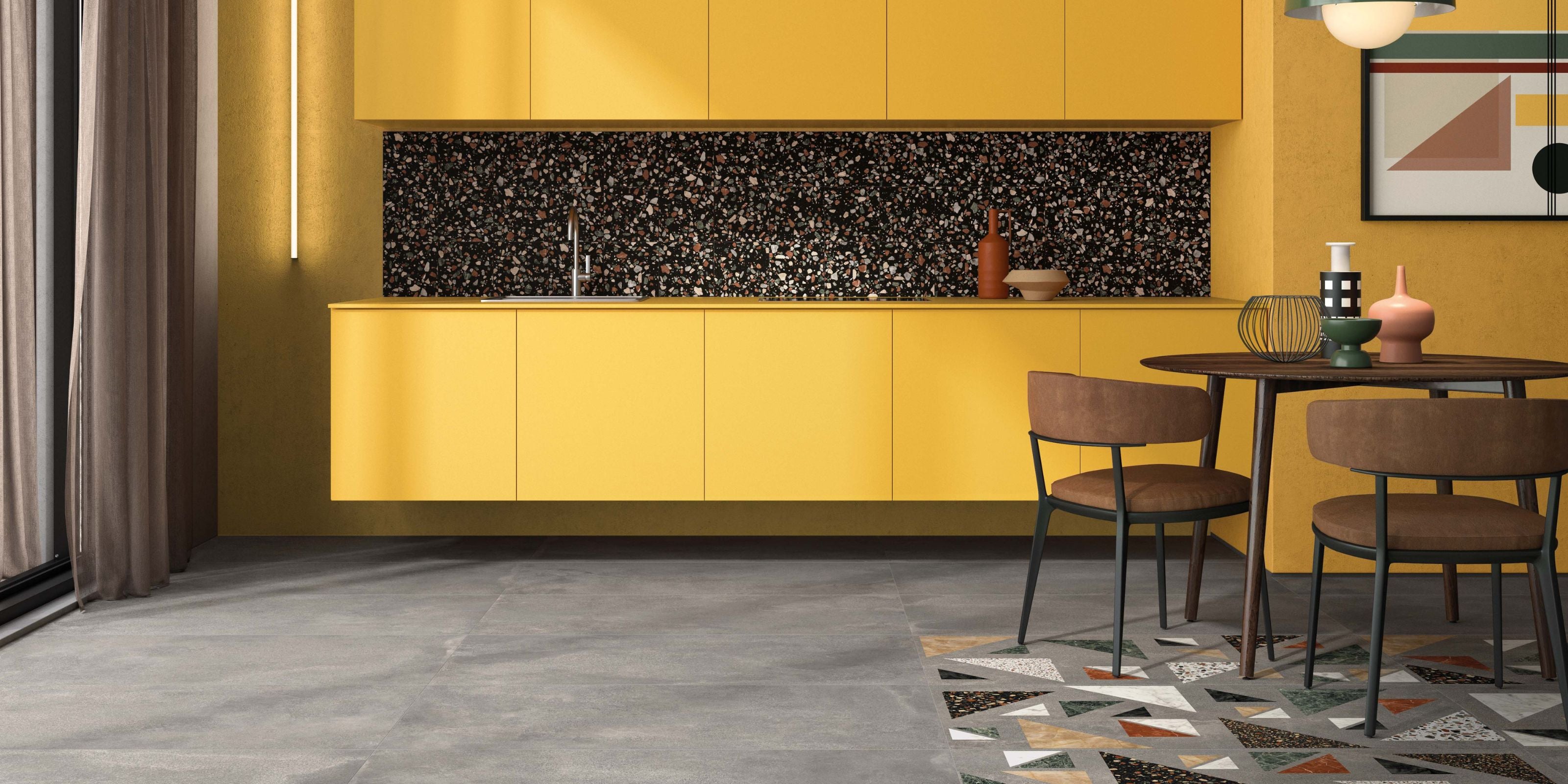
Thoughtful colour selection creates the emotional foundation of your kitchen design while ensuring long-term satisfaction with your tile investment. Incorporating pink tiles or accents can add vibrancy and contrast to kitchen interiors, making the space feel lively and unique.
Neutral palettes with whites, grays, and beiges for timeless appeal
Neutral colour schemes provide timeless foundations that adapt to changing furniture, accessories, and personal preferences over time. White, gray, and beige tiles create calm, sophisticated backgrounds that highlight other design elements while ensuring broad market appeal.
These colours work particularly well in smaller kitchens where light reflection helps create the illusion of space. Neutral tiles also provide flexibility for future updates without requiring complete renovations.
Monochromatic schemes using varying shades of single colours
Monochromatic colour schemes create sophisticated, layered appearances using different tones and textures within a single colour family. This approach allows you to create depth and interest while maintaining visual harmony throughout your space.
The technique works particularly well with natural materials like stone, where inherent colour variation provides subtle tonal differences within the chosen colour range.
Bold accent colours like emerald green, cobalt blue, or burnt orange
Strategic use of bold colours creates focal points and expresses personality within otherwise neutral kitchens. Jewel tones like emerald, cobalt, and burnt orange provide vibrant punctuation that energizes spaces without overwhelming them.
These accent colours work best when applied to smaller areas like backsplashes or accent bands, where their impact remains fresh and exciting rather than tiresome over time.
Earth tones including terracotta, ochre, and warm browns
Earth tone palettes reflect the growing trend toward biophilic design that connects interior spaces to natural environments. Colours like terracotta, ochre, and warm brown create welcoming, grounded atmospheres that complement wood furniture and natural materials.
These colours work particularly well in kitchens where you want to create casual, family-friendly environments that encourage gathering and conversation.
Metallic accents with copper, brass, or stainless steel tiles
Metallic tiles add luxury and light reflection that enhances both traditional and contemporary kitchen designs. Copper provides warmth and develops natural patina over time, while brass offers golden elegance. Stainless steel creates professional, commercial-inspired aesthetics.
Metallic tiles work best as accent elements rather than primary surfaces, where their reflective properties create interesting light play without becoming overwhelming.
High-contrast combinations like black and white for dramatic impact
High-contrast colour combinations create bold, graphic statements that work particularly well in contemporary kitchens. Black and white remains the classic high-contrast pairing, offering endless pattern possibilities from checkerboards to geometric arrangements.
These dramatic schemes work best in kitchens with ample natural light, where the contrast can be appreciated without creating overly dark or harsh environments.
Tile Size and Layout Considerations
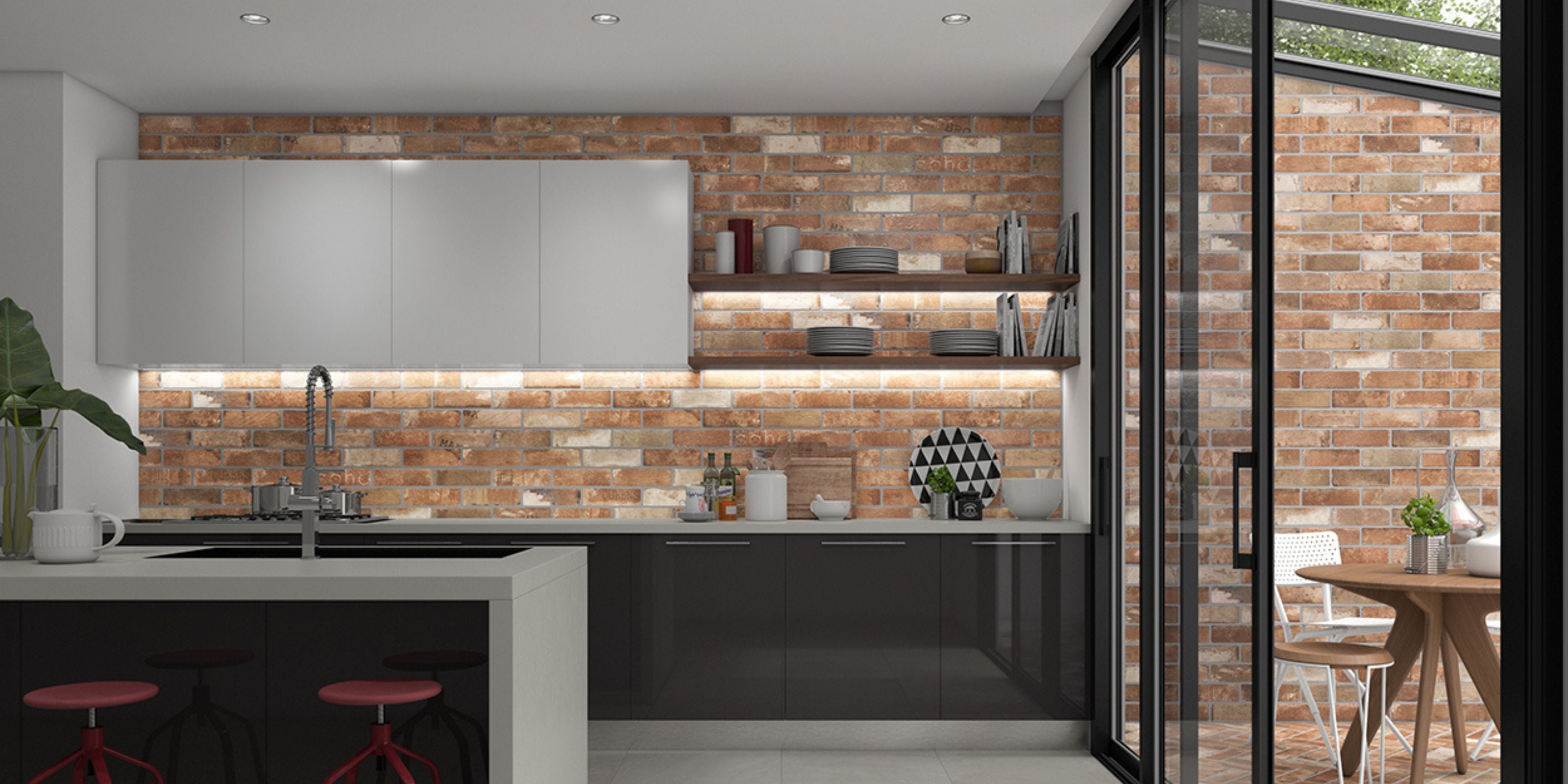
Selecting appropriate tile sizes and layout patterns significantly impacts both the visual perception of your space and the practical success of your installation.
Large format tiles for spacious, modern looks
Large format tiles create seamless, contemporary appearances that visually expand smaller kitchens while emphasizing clean, uncluttered aesthetics. Fewer grout lines mean easier maintenance and more continuous surfaces that complement modern design principles.
These tiles work particularly well for minimalist kitchens where simplicity and clean lines are primary design goals. However, the large size requires professional installation to prevent cracking and ensure proper support.
Small format tiles for detailed patterns and flexibility
Small tiles offer maximum design flexibility, allowing for intricate patterns, curved installations, and detailed border work that larger tiles cannot achieve. They work particularly well for traditional styles or spaces where handcrafted character is desired.
The increased number of grout lines requires more maintenance but provides better slip resistance for floor applications. Small tiles also accommodate irregular surfaces and architectural details more easily than large formats.
Penny tiles and mosaics for curved surfaces and intricate designs
Penny tiles and other small mosaics excel at covering curved surfaces, creating intricate patterns, and adding textural interest to kitchen designs. Their flexibility makes them ideal for covering rounded edges, inside corners, and other challenging areas.
These tiles work exceptionally well as accent borders or feature areas within larger tile installations, where their detailed character can be appreciated without overwhelming the space.
Rectangular tiles in various proportions for versatile layouts
Rectangular tiles offer versatility in creating different visual effects through various laying patterns. The same tile can appear completely different when installed horizontally versus vertically, or in patterns like herringbone versus running bond.
This flexibility allows you to achieve multiple aesthetics with a single tile purchase, making rectangular formats excellent choices for creating pattern variation within unified designs.
Mixed sizes within single installations for custom appearances
Combining multiple tile sizes within single installations creates custom, bespoke appearances that suggest professional design service. This approach works particularly well with natural stone tiles where size variation emphasizes the material’s organic character.
Successful mixed-size installations require careful planning to ensure balanced distribution and proper transitions between different sizes throughout the space.
Layout Patterns
The pattern in which you install your tiles significantly affects the visual perception and character of your kitchen space.
Running bond (brick pattern) for classic, balanced appearance
Running bond patterns create stable, familiar appearances that work well in traditional kitchen designs. The offset arrangement provides visual stability while the overlapping joints create strength and prevent eye-catching alignment issues.
This pattern works particularly well with rectangular tiles and provides forgiving installation tolerances that make it suitable for DIY projects.
Stack bond for modern, grid-like precision
Stack bond patterns create clean, geometric grids that emphasize contemporary design principles. The aligned joints create strong horizontal and vertical lines that complement modern kitchen aesthetics.
This pattern requires precise installation to maintain clean lines, but the geometric regularity creates sophisticated, ordered appearances that work well in minimalist designs.
Diagonal layouts to create visual expansion and interest
Installing tiles on diagonal orientations creates dynamic visual movement while making spaces appear larger than square installations. The diagonal lines draw the eye across surfaces, creating the illusion of expanded space.
This technique works particularly well in narrow kitchens or other spaces where you want to counteract linear constraints through directional emphasis.
Random patterns for organic, natural stone effects
Random patterns work particularly well with natural stone tiles where irregular arrangement emphasizes the material’s organic character. This approach creates casual, unstructured appearances that complement rustic or farmhouse kitchen styles.
Successful random patterns require careful distribution of colours and sizes to achieve balanced, natural-looking results throughout the installation.
Practical Considerations for Kitchen Tiles
Selecting tiles based on practical requirements ensures your investment performs well throughout years of daily use while maintaining its aesthetic appeal.
Water resistance ratings for areas near sinks and dishwashers
Water resistance becomes critical in areas around sinks, dishwashers, and other wet zones where tiles face constant moisture exposure. Porcelain tiles are nonporous, thus they provide excellent moisture resistance, while glazed ceramic offers good protection for most applications wher water exposure is not frequent.
Natural stone tiles require proper sealing to achieve adequate water resistance, and some porous materials may not be suitable for high-moisture areas regardless of sealing.
Heat resistance for tiles behind cooktops and ovens
Kitchen tiles behind cooktops and ovens must withstand heat exposure without cracking, discolouring, or releasing adhesive bonds. Most ceramic and porcelain tiles handle normal kitchen heat exposure well, though the adhesive and grout selection becomes critical for performance.
Natural stone generally provides excellent heat resistance, though sudden temperature changes can cause some materials to crack. Professional installation ensures proper material selection and application techniques for heat-exposed areas.
Slip resistance ratings for floor applications
Floor tiles must provide adequate slip resistance to prevent accidents, especially in areas where water and food spills occur regularly. Textured surfaces, matt finishes, and certain natural stones offer superior slip resistance compared to polished materials.
Slip resistance ratings help you select appropriate materials for floor applications, with higher ratings recommended for areas near sinks and other wet zones.
Maintenance requirements including sealing and cleaning protocols
Different tile materials require varying maintenance approaches that affect long-term costs and convenience. Ceramic and porcelain tiles are durable and can be cleaned effectively using standard household cleaners. While pH-neutral products are gentle and can help preserve grout and sealants over time, everyday cleaning with common cleaning agents is generally safe and sufficient for maintaining these tiles. Natural stone, however, requires periodic sealing and specialized care to maintain its appearance and durability.
Understanding maintenance requirements before purchase helps you select materials that match your lifestyle and maintenance preferences.
Grout selection for durability and stain resistance
Grout selection significantly affects both the appearance and performance of your tile installation. Epoxy grouts provide superior stain resistance and durability compared to traditional cement-based options, though they cost more and require professional installation.
Grout colour affects both appearance and maintenance requirements, with darker colours hiding stains better than light options.
Edge treatments and trim pieces for professional finishes
Proper edge treatments and trim pieces create finished, professional appearances while protecting tile edges from damage. Bullnose tiles, metal trim strips, and carefully mitered corners provide clean transitions and durable edge protection.
Planning for appropriate trim pieces during the design phase ensures professional results and prevents installation complications.
Installation Tips and Best Practices
Proper installation techniques ensure your tile investment performs well and maintains its appearance throughout years of use.
Proper surface preparation including cleaning and priming
Surface preparation creates the foundation for successful tile installation. Clean, level, and properly primed surfaces ensure strong adhesive bonds and prevent future failures.
Inadequate preparation often causes installation problems that become expensive to correct after completion, making this step critical for long-term success.
Correct adhesive selection based on tile type and substrate
Different tile materials and substrate types require specific adhesive formulations for optimal performance. Epoxy-modified and latex-modified adhesives provide superior bond strength for demanding applications.
Using inappropriate adhesives can cause bond failure, especially in areas subject to moisture, heat, or thermal expansion.
Precise measuring and layout planning before cutting tiles
Accurate measurement and careful layout planning minimize waste while ensuring balanced, professional-appearing patterns. Dry-laying tiles before adhesive application reveals potential issues and allows for adjustments.
Poor layout planning often results in narrow cuts at edges or unbalanced patterns that detract from the overall appearance.
Proper grouting techniques with appropriate curing time
Grout application requires proper techniques and adequate curing time to achieve optimal strength and appearance. Rushing the grouting process or using incorrect techniques can compromise the installation’s durability.
Following manufacturer specifications for grout mixing, application, and curing ensures warranty compliance and optimal performance.
Sealing requirements for natural stone and porous materials
Natural stone and some ceramic tiles require sealing before and after installation to prevent staining and moisture penetration. Using appropriate sealers and following proper application procedures protects your investment.
Inadequate sealing often leads to permanent staining that cannot be corrected without replacement, making proper sealing essential for natural materials.
Maintenance and Care
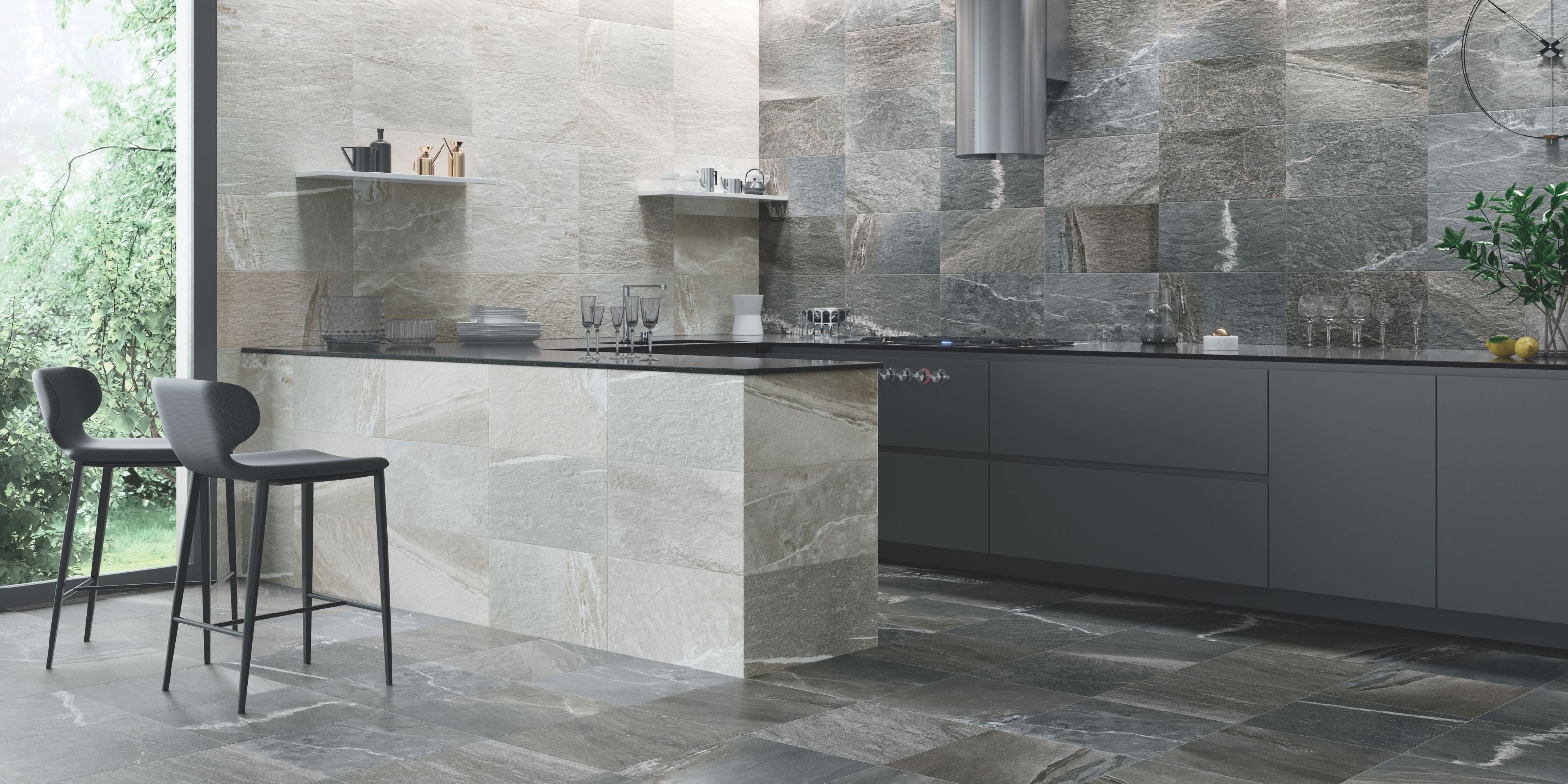
Establishing proper maintenance routines protects your tile investment while ensuring continued beauty and performance throughout years of use.
Daily cleaning with appropriate pH-neutral cleaners
Regular cleaning with pH-neutral products maintains tile appearance while preventing damage from harsh chemicals. Most ceramic and porcelain tiles require only simple cleaning routines that fit easily into busy lifestyles.
Avoiding acidic or abrasive cleaners prevents damage to both tiles and grout, ensuring long-term beauty and performance.
Annual sealing for natural stone tiles
Natural stone tiles typically require annual sealing to maintain stain resistance and appearance. Professional sealing ensures proper coverage and selection of appropriate sealer types for your specific stone.
Neglecting sealing schedules often results in permanent staining that significantly reduces the stone’s appearance and value.
Grout cleaning and maintenance to prevent discolouration
Grout requires regular attention to prevent discolouration and maintain its protective function. Professional grout cleaning every few years restores appearance and extends grout life.
Proper grout maintenance prevents moisture penetration that can damage substrates and cause tile failure.
Immediate cleanup of spills to prevent staining
Prompt spill cleanup prevents staining, especially on natural stone and other porous materials. Acidic substances like wine, coffee, and citrus can cause permanent damage if left on certain surfaces.
Establishing family habits for immediate spill cleanup protects your investment while maintaining your kitchen’s appearance.
Professional deep cleaning every 2-3 years for optimal appearance
Professional deep cleaning removes accumulated soil and restores original appearance, especially in high-traffic areas. Professional service includes specialized equipment and cleaning products not available to consumers.
Regular professional maintenance extends tile life while maintaining the fresh appearance that justifies your initial investment.
FAQ
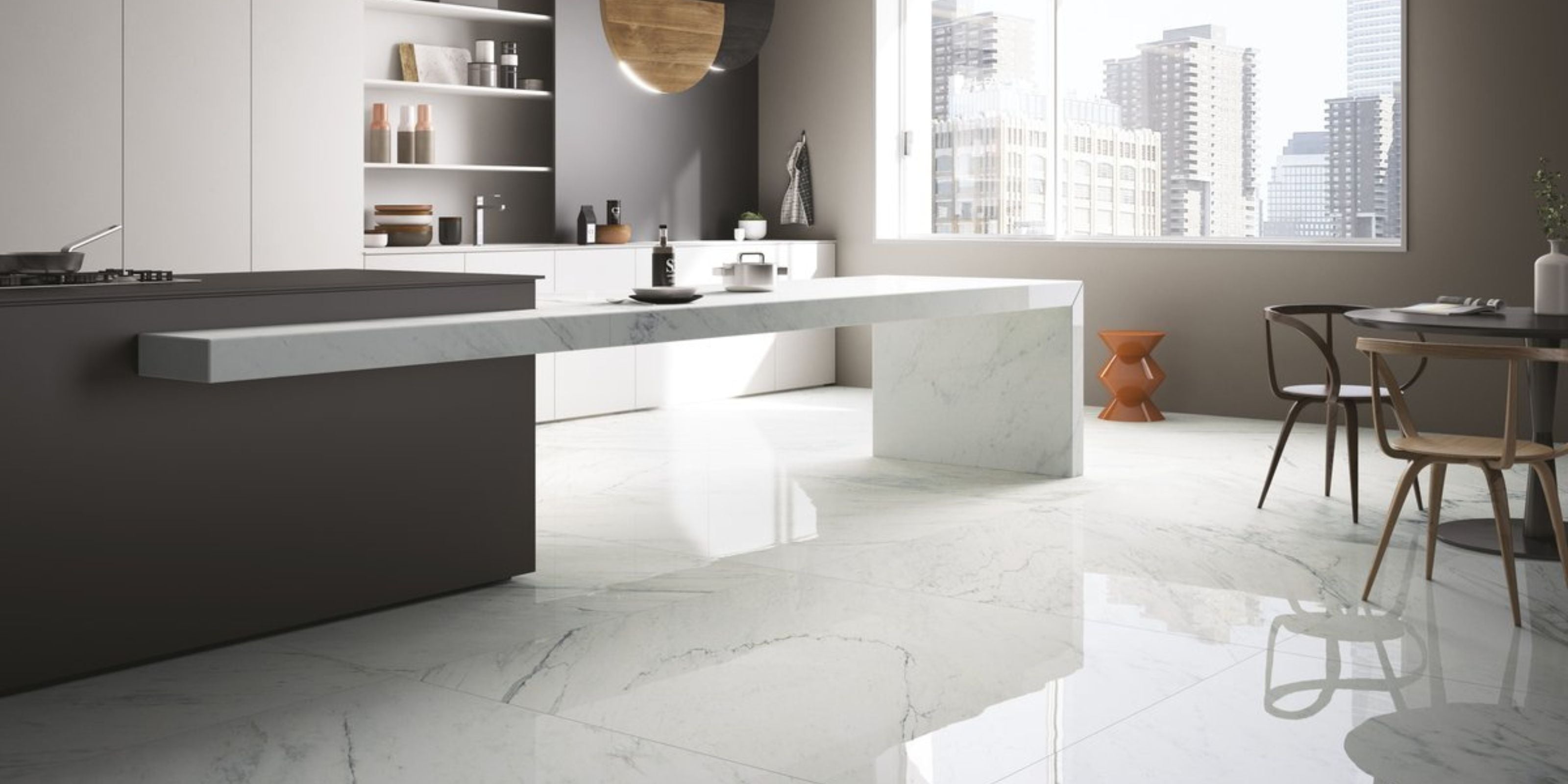
What are the most durable tiles for kitchen backsplashes?
Porcelain and glazed ceramic tiles offer excellent durability and stain resistance for backsplash applications. Porcelain provides superior performance with its dense, low-porosity construction that resists moisture and stains. Glazed ceramic tiles offer good durability at lower cost, making them suitable for most backsplash applications where extreme durability isn’t required.
Both materials resist the grease, moisture, and heat exposure common in cooking areas while requiring minimal maintenance. Their impervious surfaces don’t require sealing and clean easily with standard pH-neutral cleaners.
How do I choose the right tile size for my small kitchen?
Larger tiles can make small spaces appear bigger by minimizing grout lines and creating visual continuity, while smaller tiles offer more design flexibility for intricate patterns and easier installation around obstacles. Consider larger tiles for a modern, spacious appearance, or use smaller tiles when you want detailed patterns or need to accommodate curves and corners.
The key is balancing visual impact with practical considerations like cutting requirements and installation complexity. Large tiles require professional installation and careful handling, while smaller tiles are more forgiving for DIY projects.
Can I install kitchen tiles myself?
Simple layouts with ceramic tiles are DIY-friendly for experienced homeowners, but complex patterns and natural stone require professional installation. Subway tiles in running bond patterns offer the most forgiving DIY option, while large format tiles, natural stone, porcelain tilesm, and intricate patterns present challenges that justify professional service.
Consider your skill level, available tools, and the value of materials when deciding. Professional installation ensures warranty compliance and optimal performance, especially for expensive materials or complex designs.
What’s the difference between ceramic and porcelain tiles?
Porcelain is denser, less porous, and more durable than ceramic, making it ideal for high-moisture areas and heavy use. Porcelain tiles have water absorption rates below 0.5%, while ceramic tiles are more porous and typically cost less. Porcelain’s superior strength and stain resistance make it the premium choice for demanding kitchen applications.
In general, ceramic tiles are suitable primarily for wall applications, with only a few exceptions where they may be used on floors. On the other hand, porcelain tiles are versatile and suitable for both floors and walls due to their enhanced durability and moisture resistance.
Ceramic tiles work well for wall applications and areas with less moisture exposure, offering good performance at lower cost. Both materials offer extensive design options, though porcelain provides better long-term performance in challenging environments.
How often do kitchen tiles need resealing?
Natural stone tiles typically need resealing annually to maintain stain resistance and appearance, while glazed ceramic and porcelain tiles don’t require sealing due to their impervious surfaces. This is because ceramic and porcelain tiles are glazed during manufacture, creating a protective layer that prevents moisture absorption. However, while the tiles themselves do not need sealing, the grout between them remains porous and should be sealed to prevent staining and moisture penetration. The frequency of sealing depends on the stone type, usage level, and sealer quality.
High-traffic areas or stones with higher porosity may require more frequent sealing, while low-use areas might extend longer between applications. Professional assessment can determine optimal sealing schedules for your specific installation and usage patterns.
Your kitchen transformation begins with understanding the incredible range of possibilities that modern tiling offers. From timeless subway tiles to bold geometric patterns, from practical porcelain to luxurious natural stone, the right tiles can create a space that serves your family for decades while reflecting your personal style. Take time to explore samples, consider your lifestyle needs, and consult with professionals who can help bring your vision to life. Your perfect kitchen awaits—start planning your tile transformation today.


